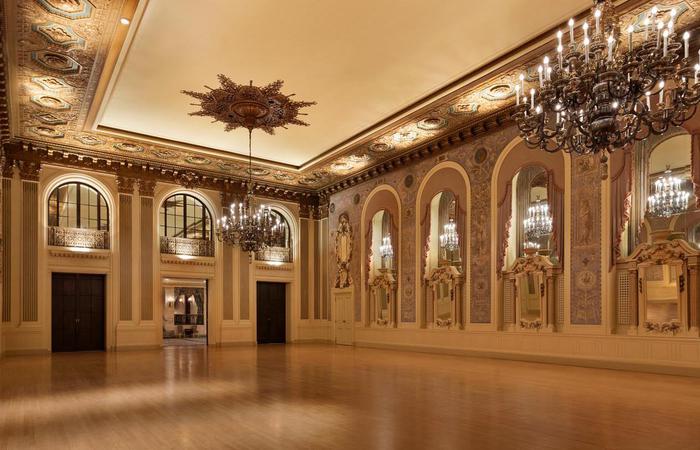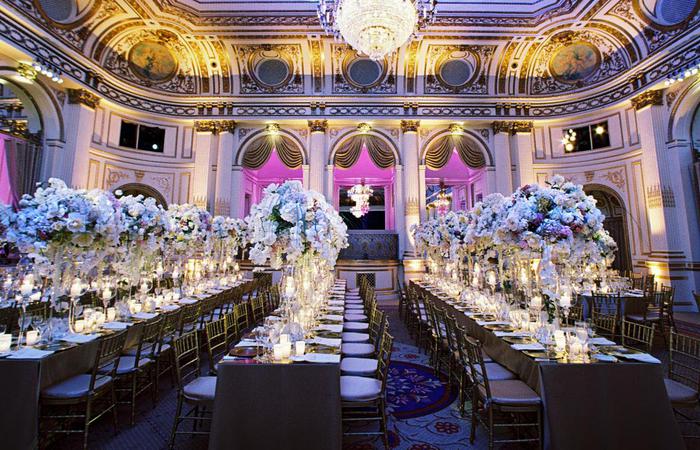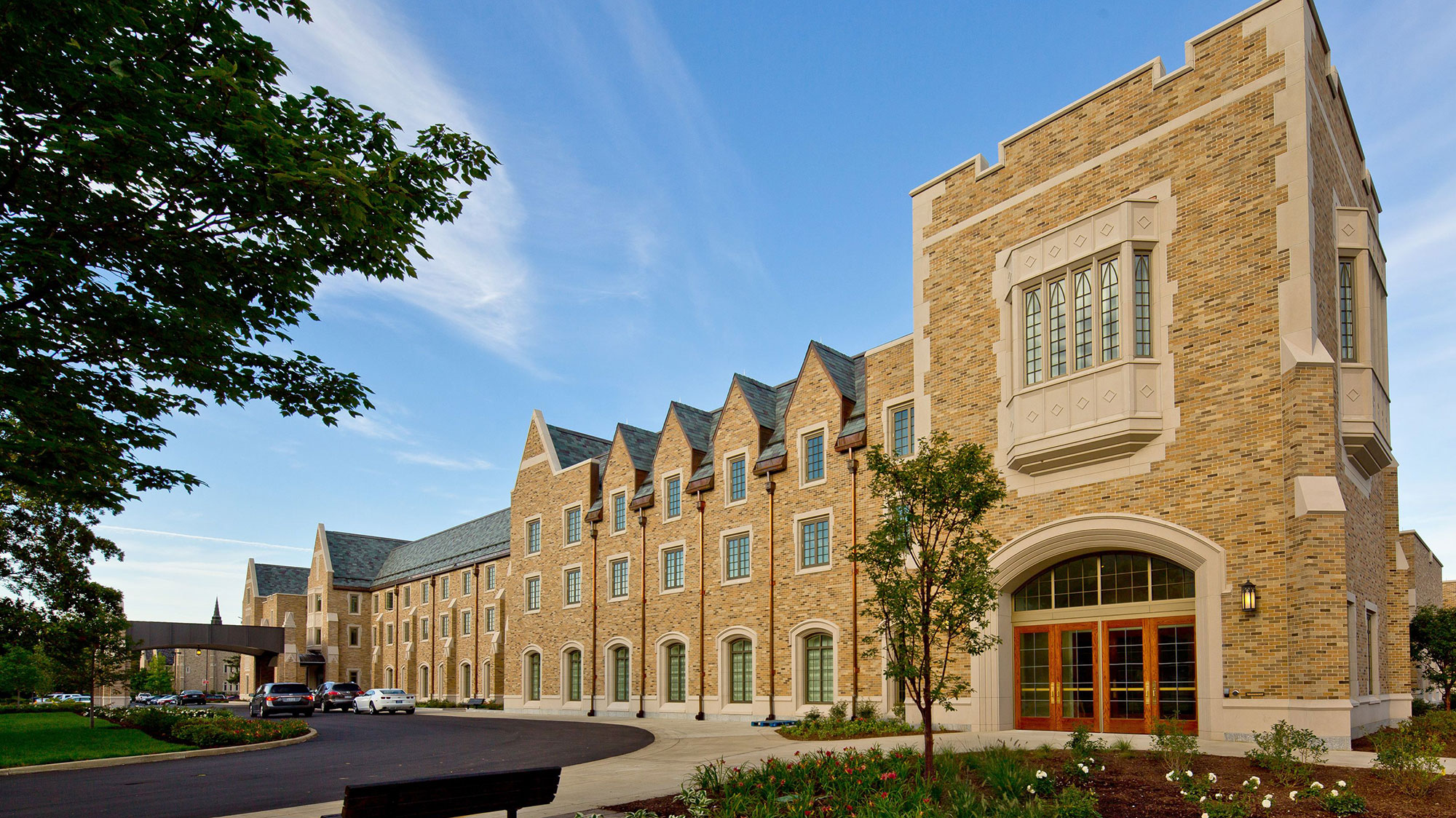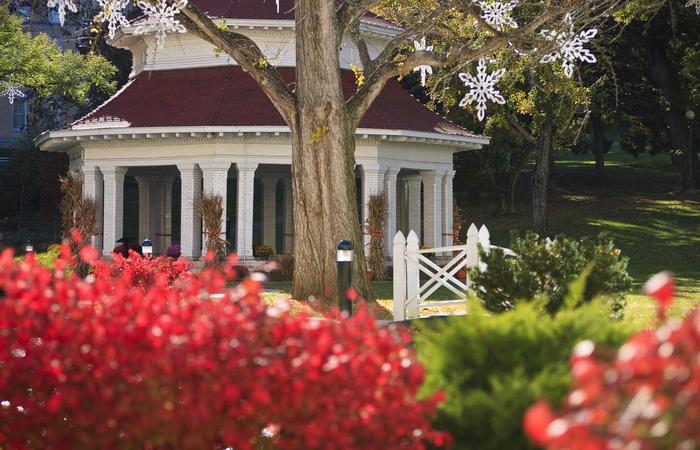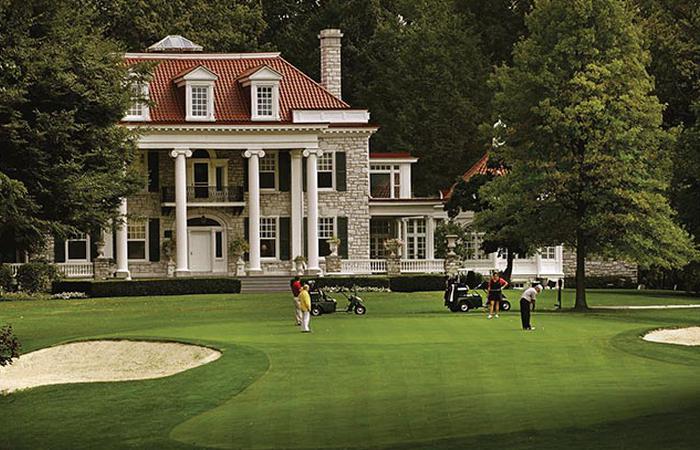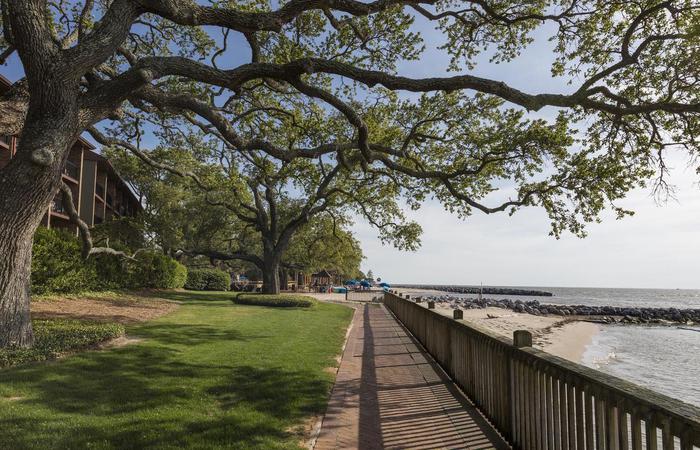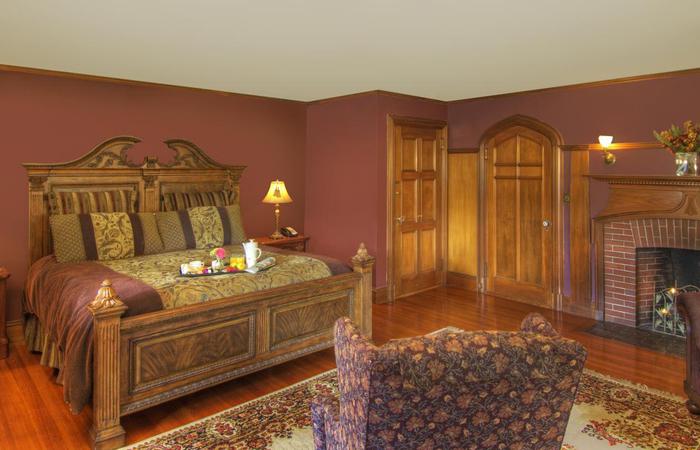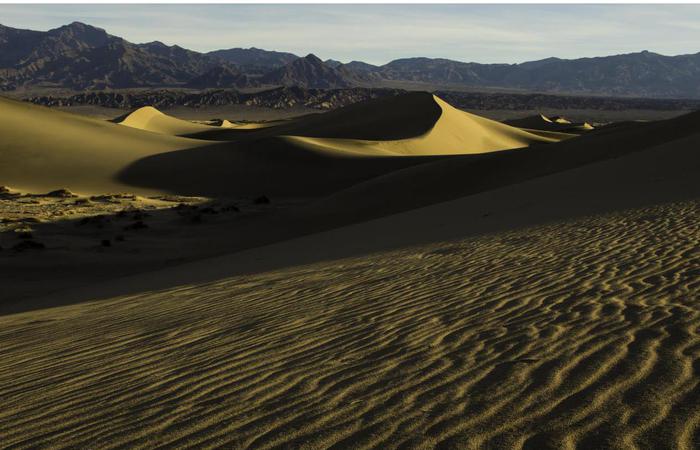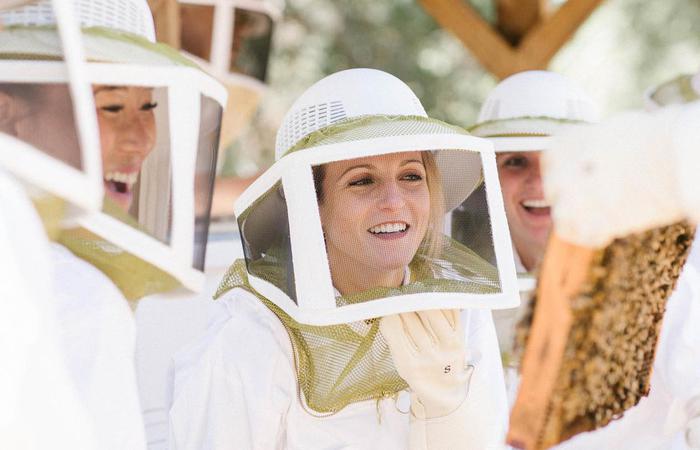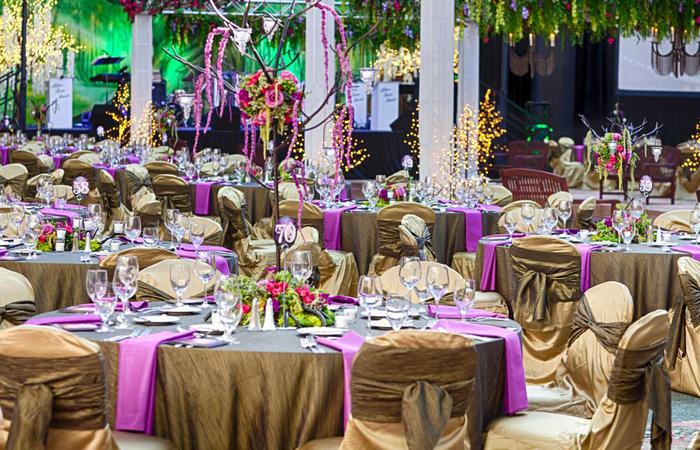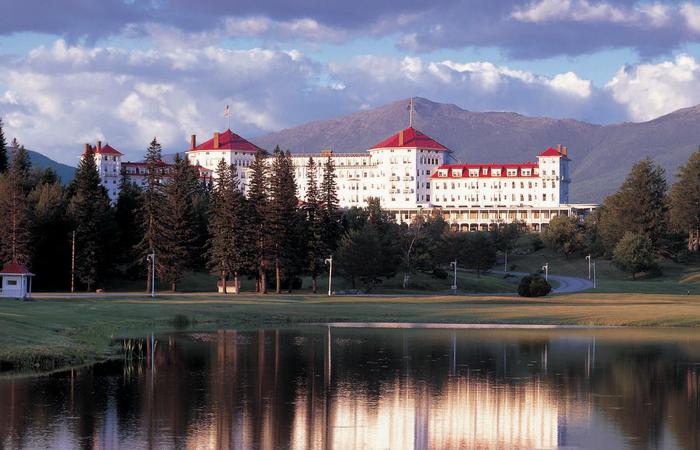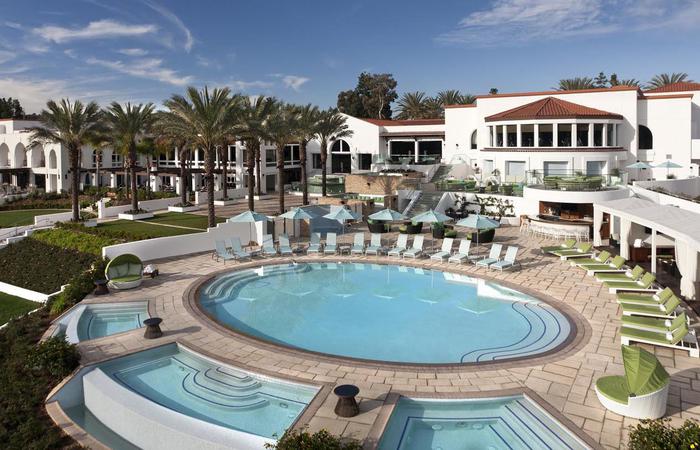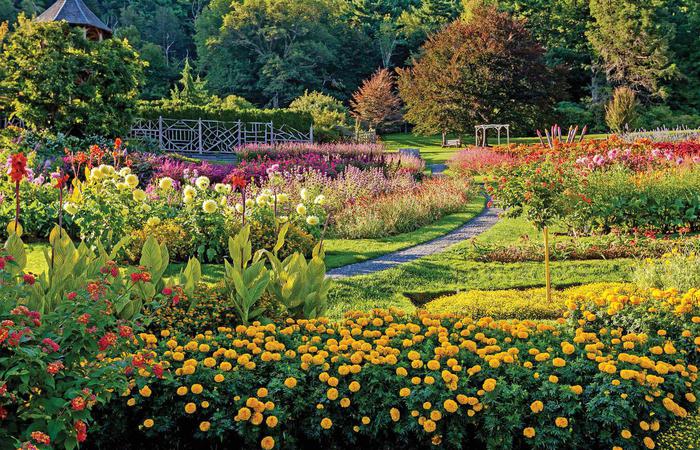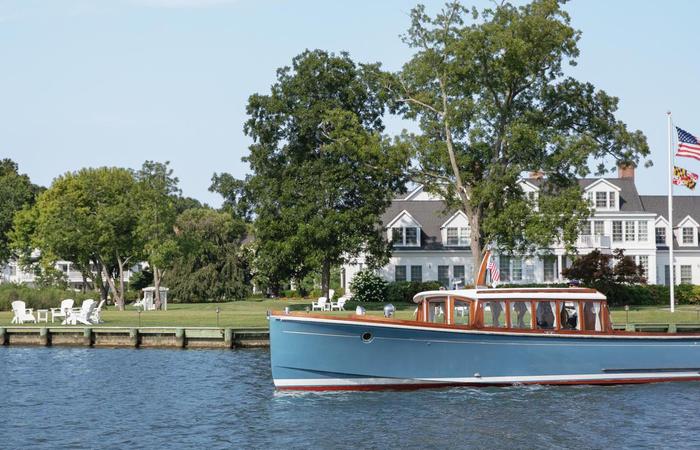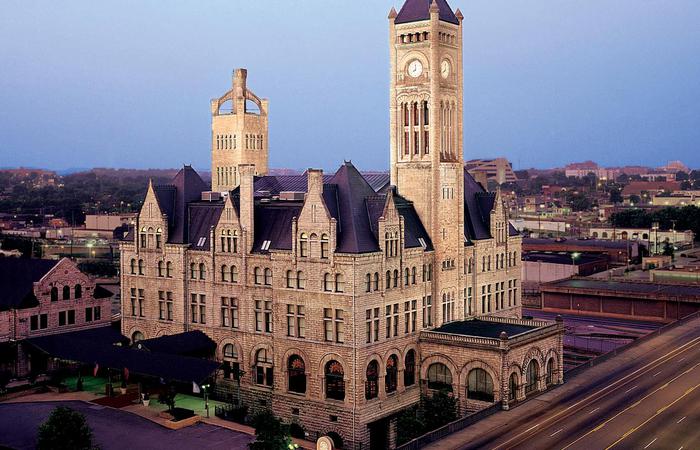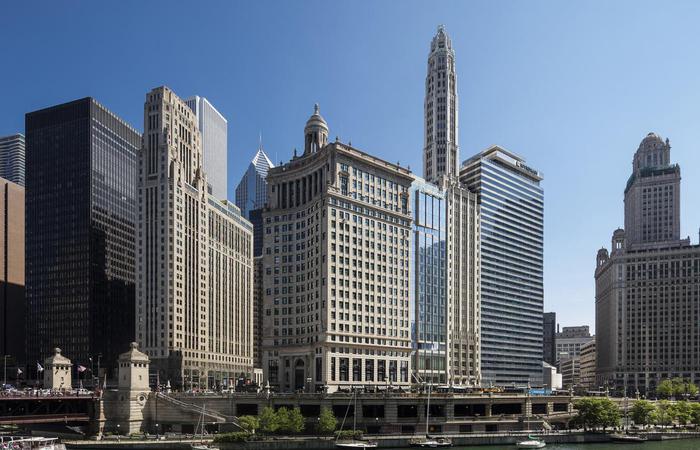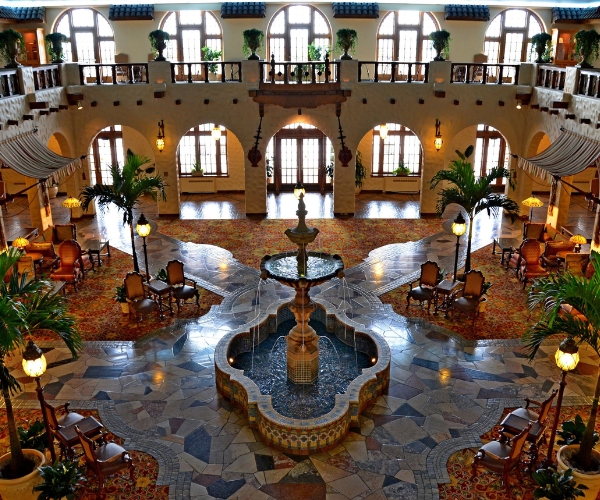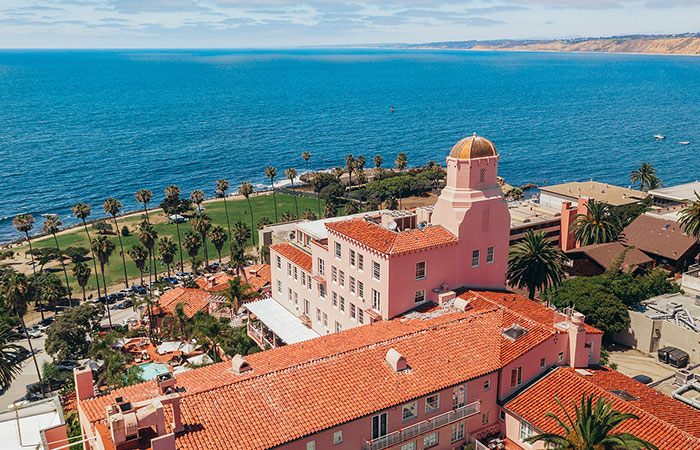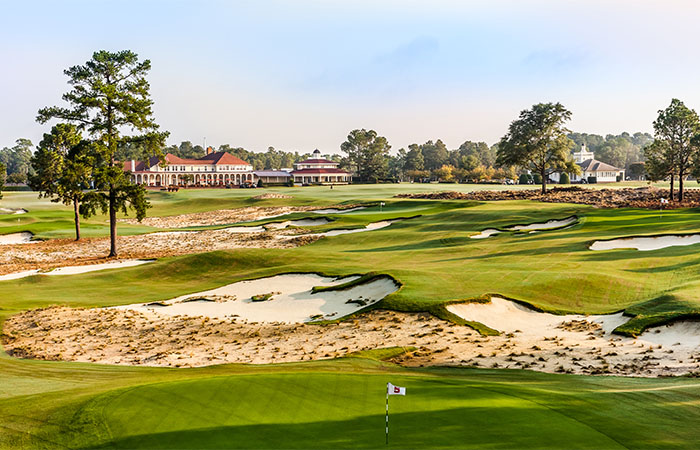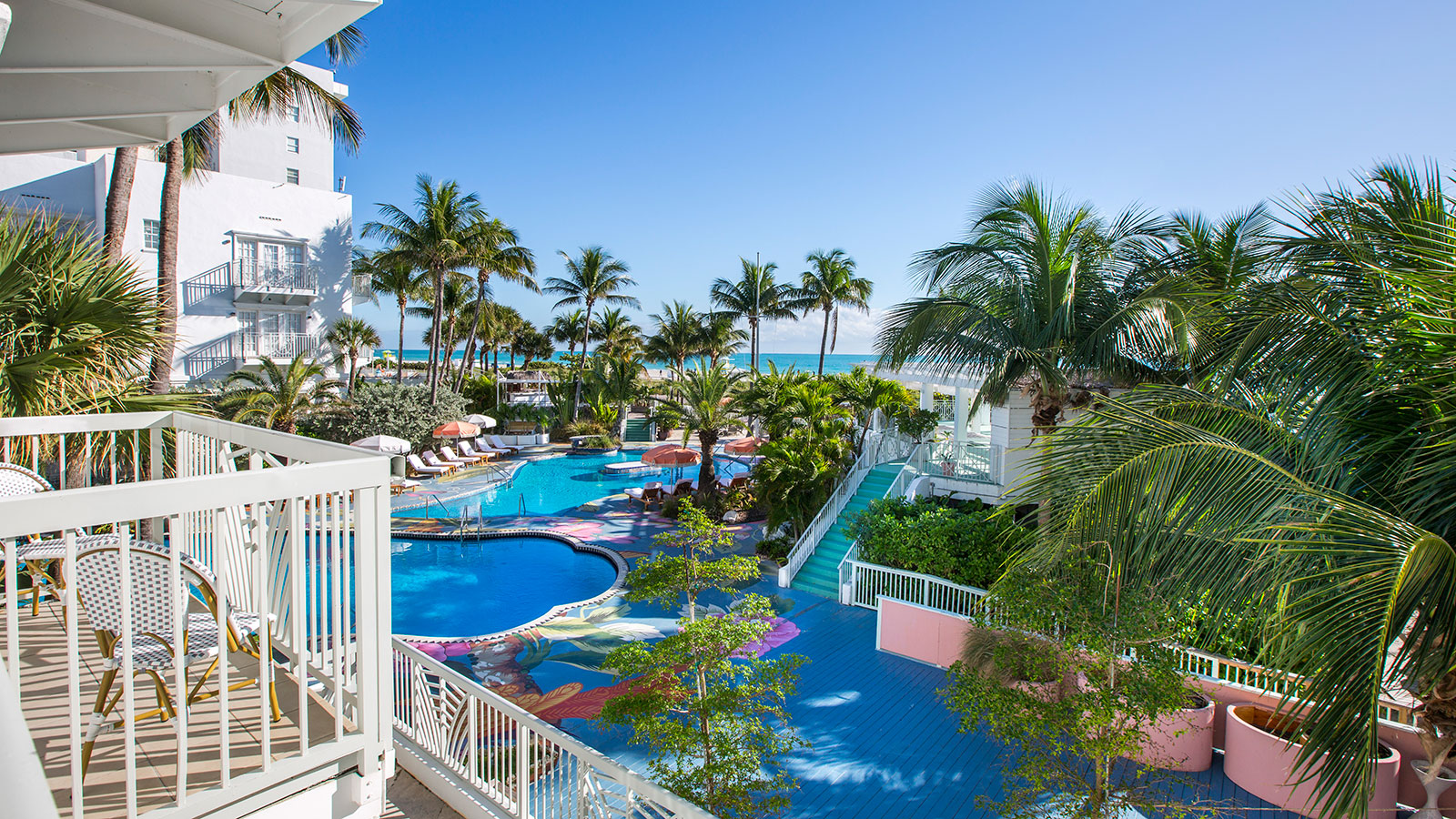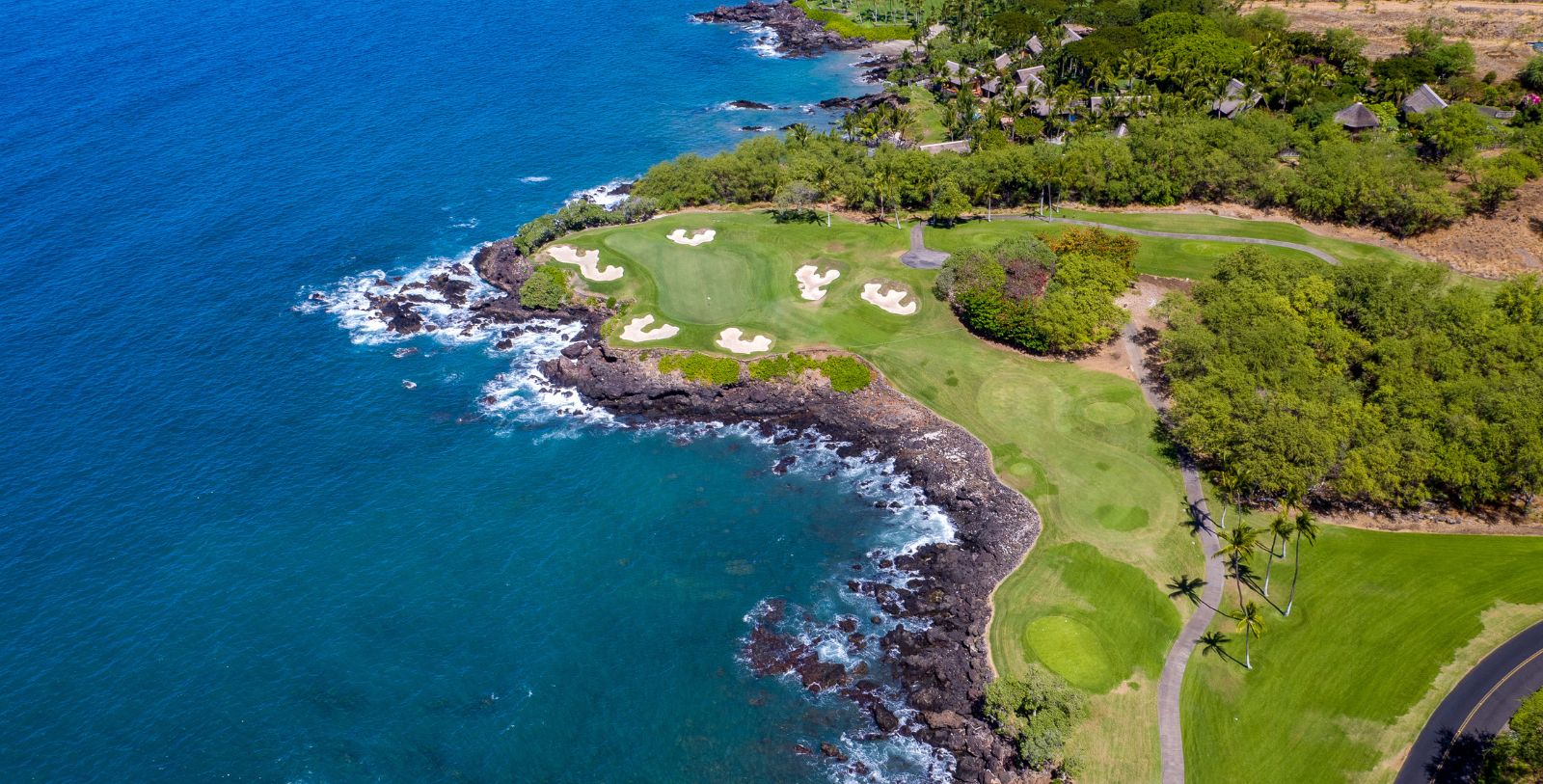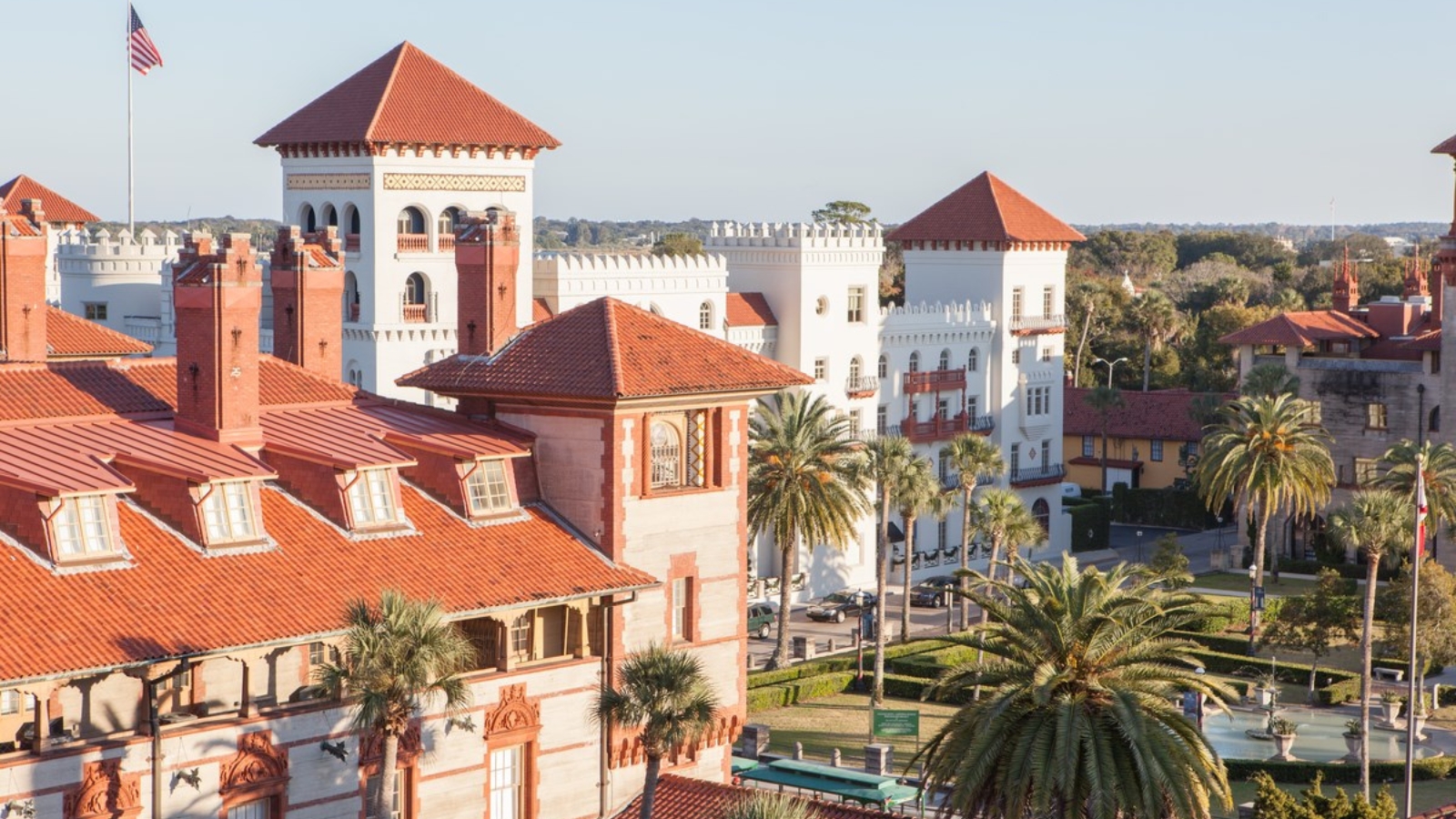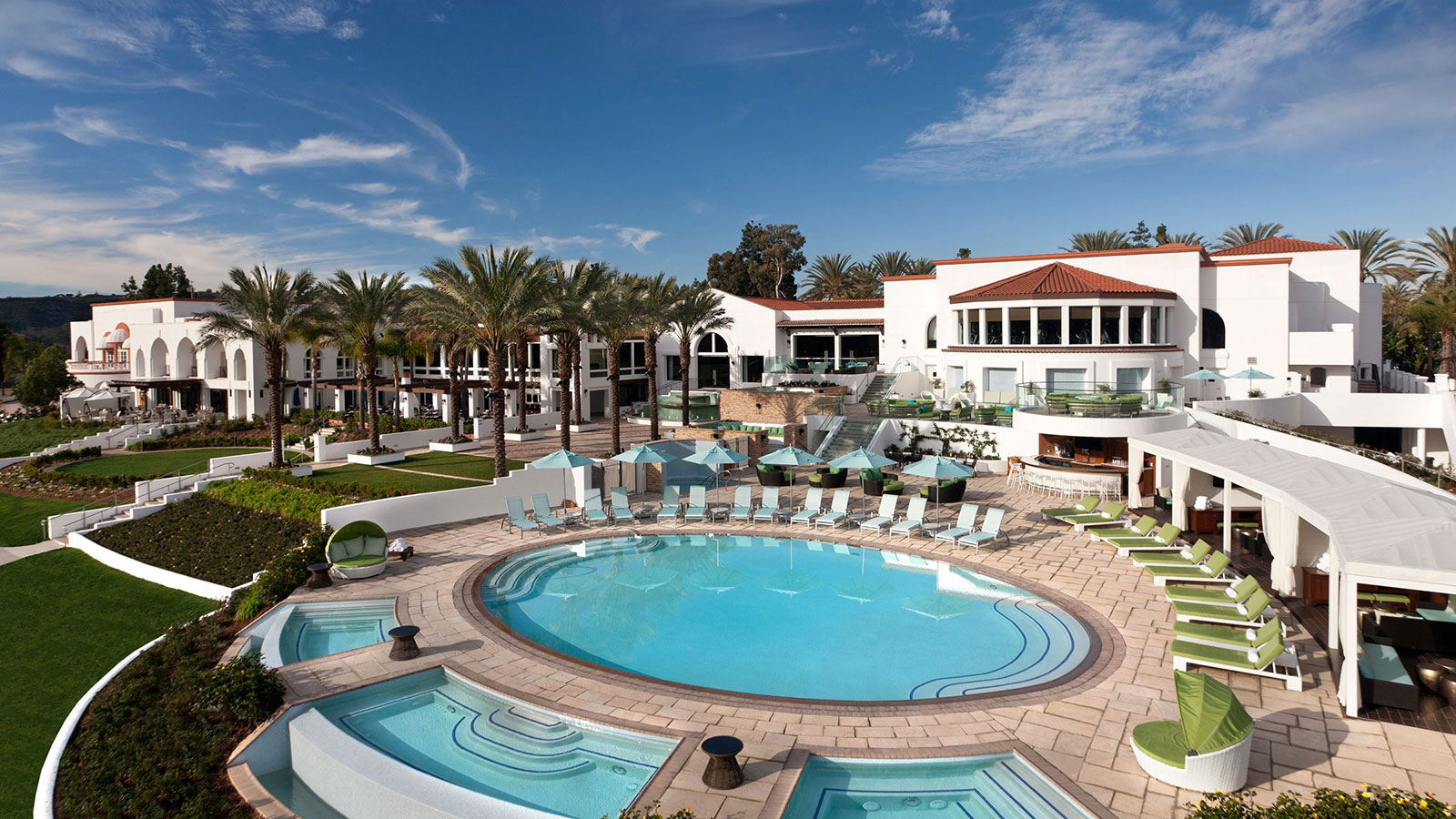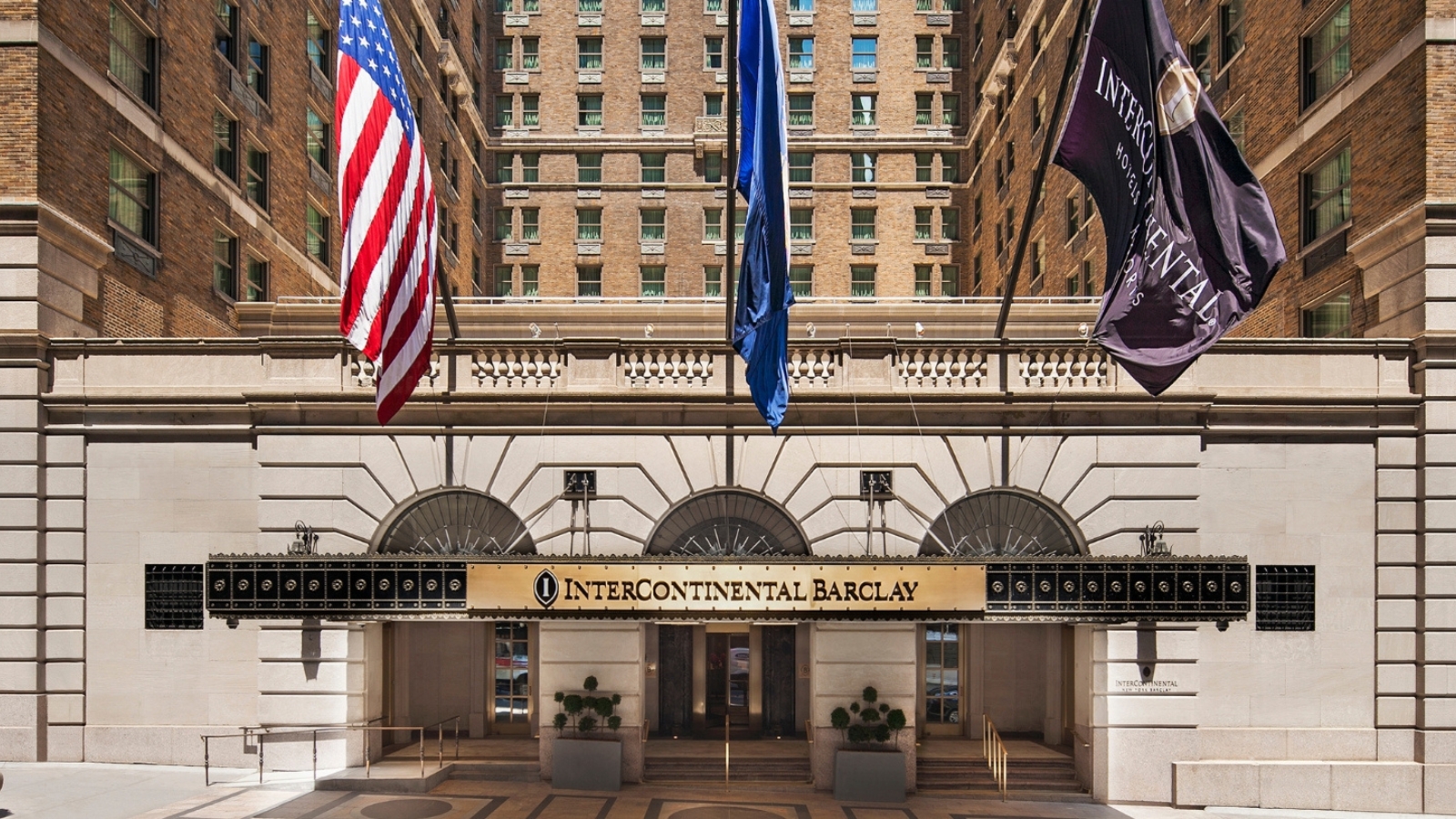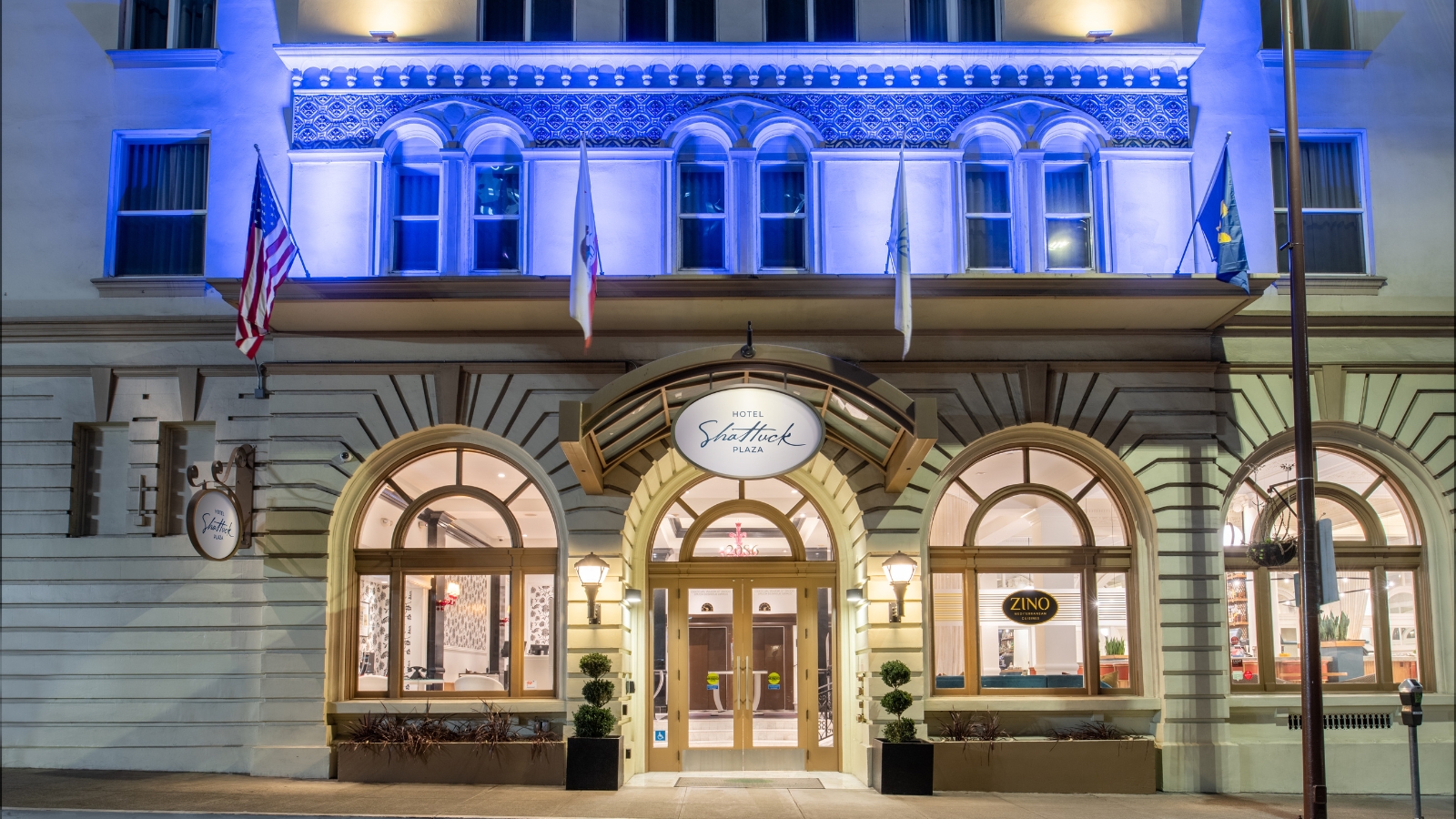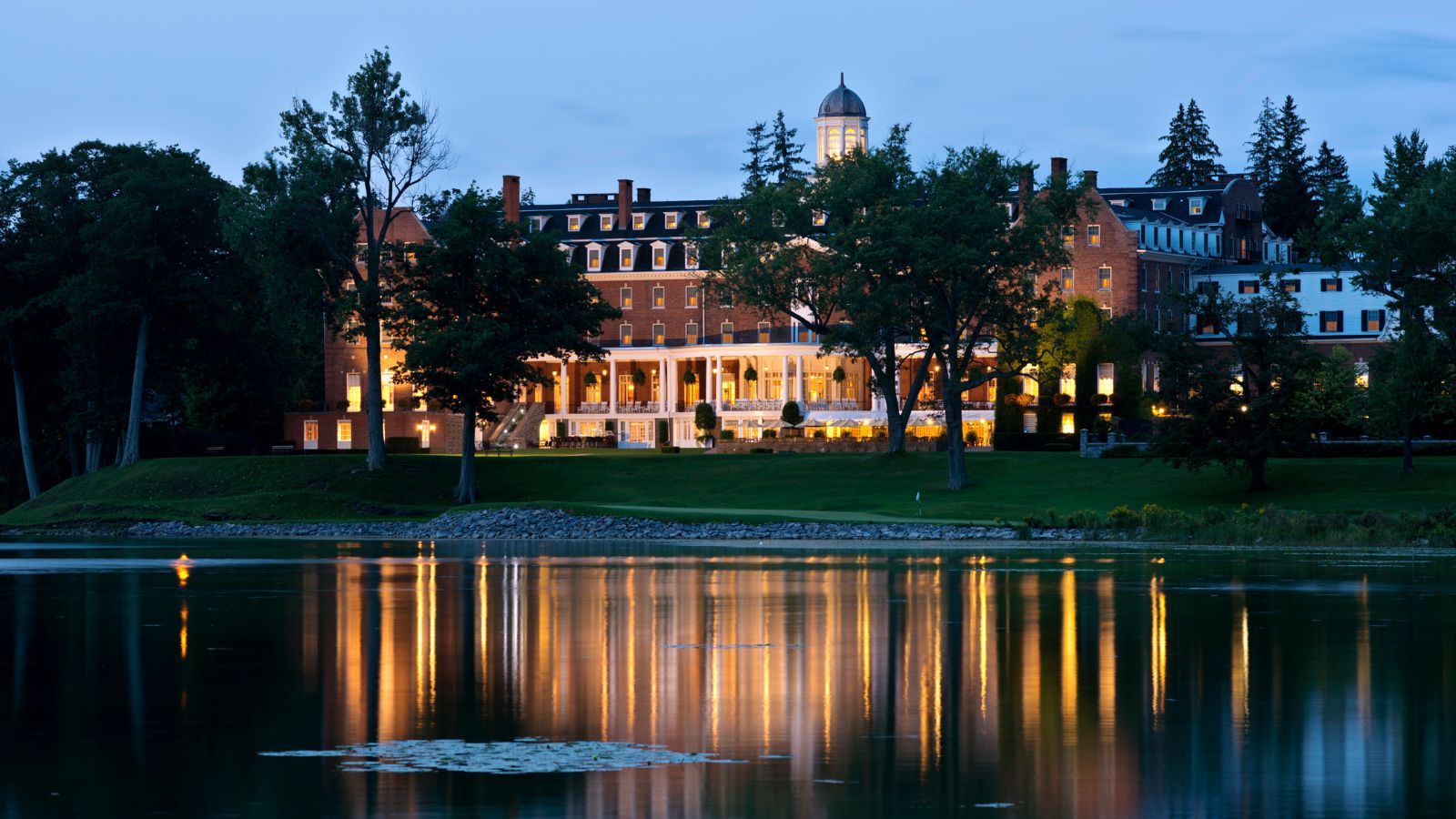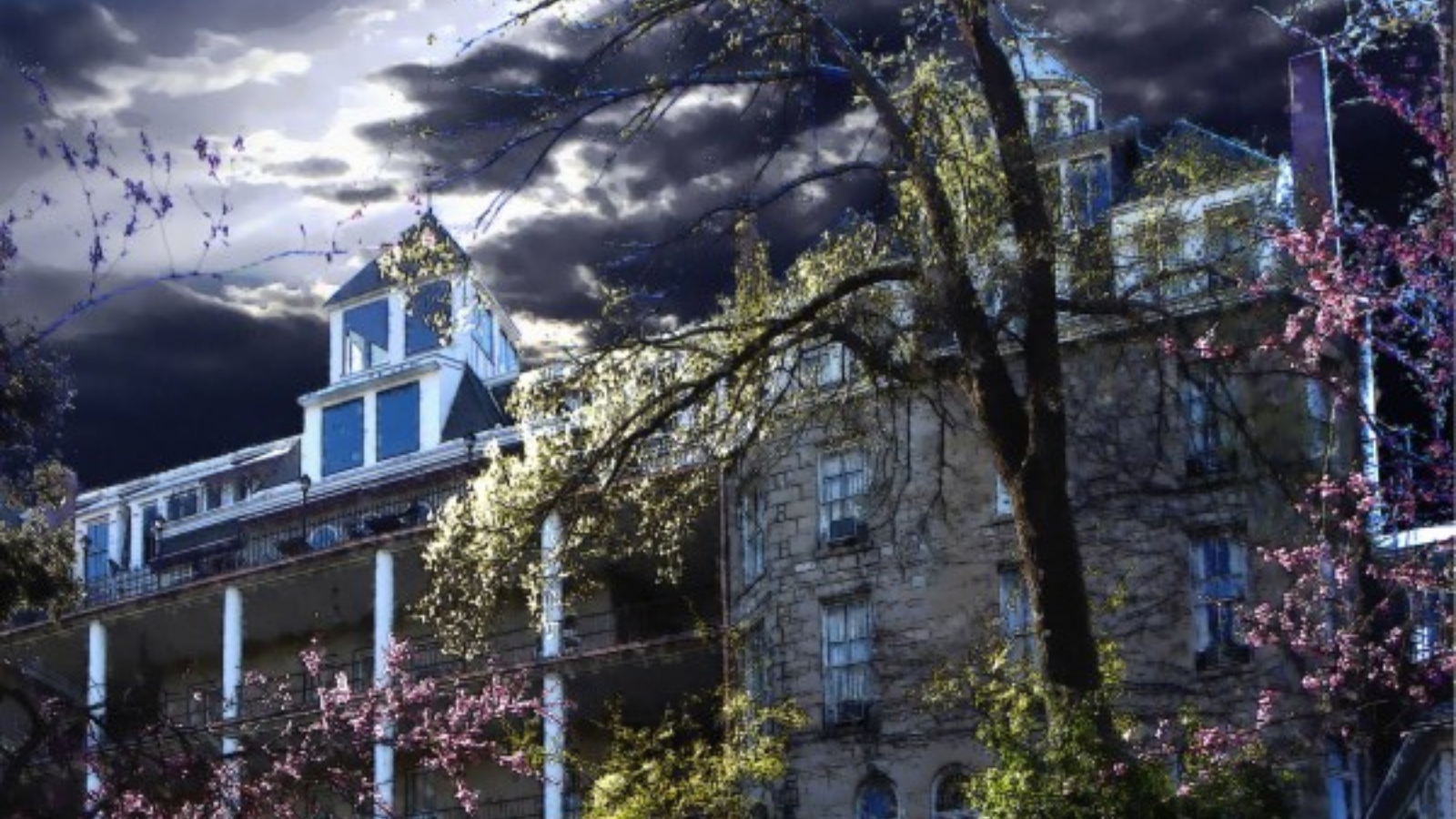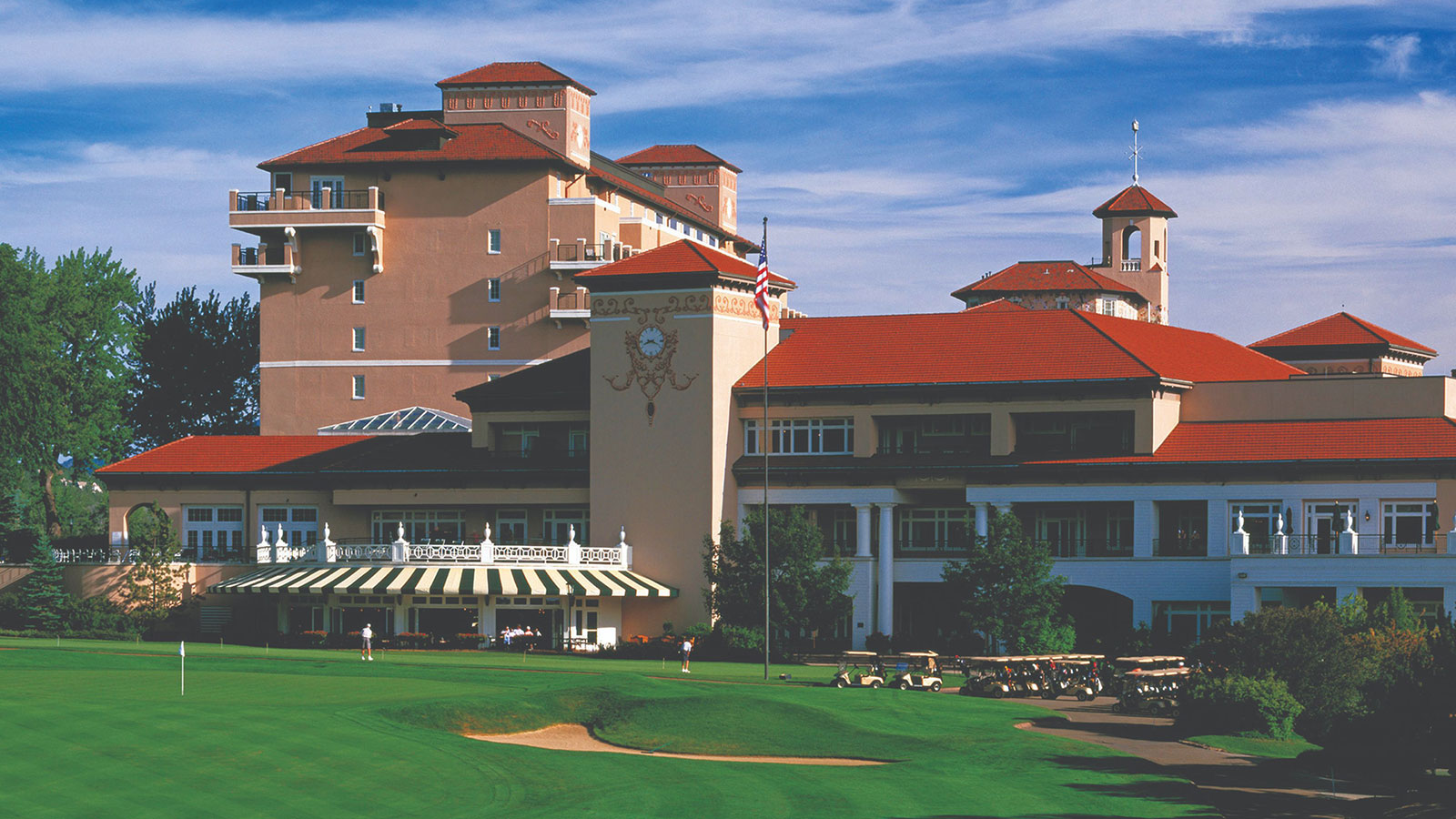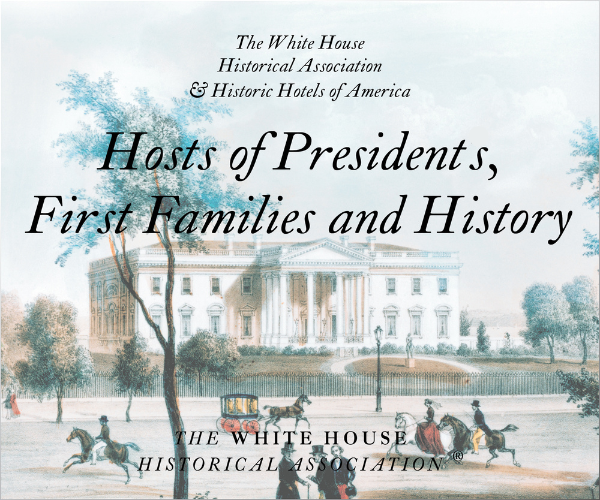Receive for Free - Discover & Explore eNewsletter monthly with advance notice of special offers, packages, and insider savings from 10% - 30% off Best Available Rates at selected hotels.
The 2024 Top 25 Historic Hotels of America® Most Historic Golf Courses List Is Announced
The 2024 Top 25 Historic Hotels of America® Most Historic Golf Courses List Is Announced
WASHINGTON, D.C., July 15, 2024 ---------Historic Hotels of America®, the official program of the National Trust for Historic Preservation for recognizing and celebrating the finest historic hotels across America, is pleased to announce The 2024 Top 25 Historic Hotels of America Most Historic Golf Courses list. This unique list of historic resorts chronicles the history of golf in the United States through many of the most beautiful, prestigious, and iconic American golf courses that continue to attract both leisure seekers and serious athletes. Many of these golf courses were designed in the late 19th and early 20th centuries, often called the Golden Age of golf course architecture. The golf courses at these Historic Hotels of America resorts were designed and renovated by legendary golf course architects ranging from Golden Age architect Donald Ross to more recent visionaries, such as Pete Dye. Scottish-born Donald Ross started his career in golf at the venerable St Andrews course in the 1890s but spent most of his career and life in the United States. He designed many of the country’s Golden Age courses, including some of the courses at Pinehurst Resort in North Carolina, The Omni Homestead Resort in Virginia, and The Broadmoor in Colorado. His influence on the game and its architecture continues to this day, both on his historic courses and on new courses that his designs inspired. In addition to claiming famous architects and championships, each course has earned a reputation, in part, based on the many famous people who have played on their greens: U.S. presidents, world leaders, golf champions, film and entertainment celebrities, and famous inventors and industrialists. The golf courses included in The 2024 Top 25 Historic Hotels of America Most Historic Golf Courses list are some of the country’s most historic and treasured spaces. Today, guests can make their own history when they stay and play where champions have played.
Sign up for Discover & Explore, a monthly culture and history travel newsletter, to keep up with new and exciting offerings from Historic Hotels of America. Visit the Historic Hotels of America Press Room to learn more about the program.
View The 2024 Top 25 Historic Hotels of America® Most Historic Golf Courses Press Release here.
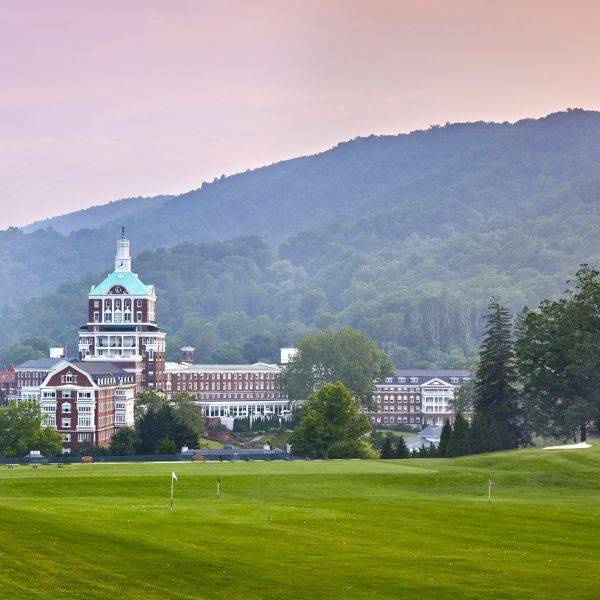 |
Visitors are invited to tee off at the most historic first tee still in continuous use in the United States at The Omni Homestead Resort in Hot Springs, Virginia. The Omni Homestead Resort was established in 1766, and its first tee is part of the aptly named Old Course, which opened in 1892 as a six-hole course. Expanded to nine holes by 1898, the Old Course ultimately reached a full 18 holes after a 1913 expansion by famed golf course designer Donald Ross. The Old Course has long been associated with U.S. presidents. William McKinley was the first U.S. president to play golf while in office (1897–1901), and he did so on the Old Course, teeing off at the Old Tee in 1899. President (1909–1913) and chief justice of the U.S. Supreme Court (1921–1930) William Howard Taft adored the Old Course, making time to play in the middle of a Virginia State Bar Association conference in 1908. Today, the presidential favorite is open to all. The Omni Homestead Resort also offers travelers a fantastic game on The Cascades course. For over a century, The Cascades course has offered challenging links set against the backdrop of Virginia's breathtaking Allegheny Mountains. PGA Tour record holder Sam Snead launched his career on this fabled Virginia mountain golf course. Designed by legendary golf course architect William S. Flynn in 1923, The Cascades uses its varied terrain to influence play rather than dictate it. The Cascades has hosted eight USGA championships and will be the site of the 2025 U.S. Senior Women’s Amateur championship and the 2029 U.S. Senior Amateur championship, putting the course among the country’s elite with 10 or more USGA championships. Nationally ranked, The Cascades frequently tops lists of the best mountain courses and is regularly listed as one of the top 100 courses in the country. The Omni Homestead Resort was inducted as a Charter Member of Historic Hotels of America in 1989 and designated a National Historic Landmark by the U.S. Secretary of the Interior in 1991. |
Tubac, Arizona
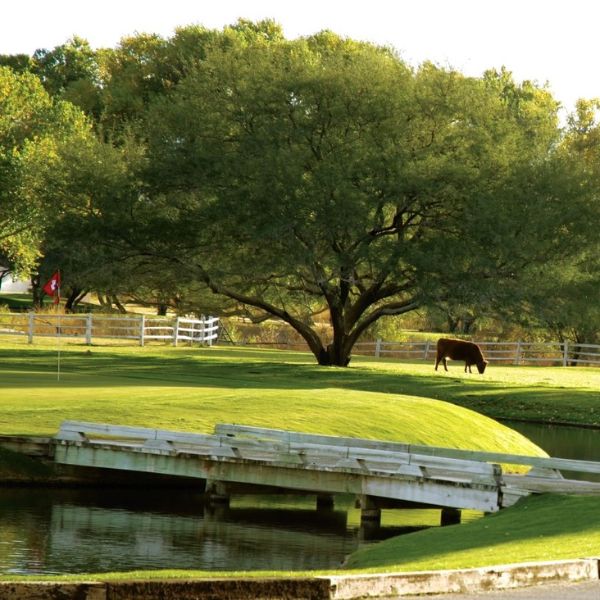 |
Tubac Golf Resort and Spa, located on the Santa Cruz River in Tubac, Arizona, was established in 1959 by a group of investors–including entertainer Bing Crosby–who purchased a historic Spanish Colonial-style ranch dating to 1789 to be the site of a luxury resort. Its first 18-hole golf course opened the same year. The mid-century course was designed by renowned golf course architect Robert “Red” Lawrence. The original course has been hailed as the "Jewel of Southern Arizona Golf Courses." Red was a founding member of the American Society of Golf Course Architects and designed several famous courses throughout the country. The architectural beauty of the resort, set with the backdrop of the distant Santa Rita Mountains and the local cattle ranch, gives the game played there its unique charm. The Santa Cruz River provides a surprisingly lush landscape, with plenty of ponds and tall cottonwood trees. In 1996, its beauty was recognized by Hollywood as the setting for iconic scenes in the Kevin Costner-led golf movie, Tin Cup. In 2006, the resort expanded to 36 holes in total. The historic 18-hole course transformed into three distinct nine-hole courses: the Otero Course, the Anza Course, and the Rancho Course. Today, the resort invites locals and travelers alike to play its three desert oasis courses. The design allows golfers to choose two nine-hole courses for an 18-hole game, for three different golfing experiences on the grounds of the historic course. Tubac Golf Resort and Spa was inducted into Historic Hotels of America in 2008 |
Woodstock, Vermont
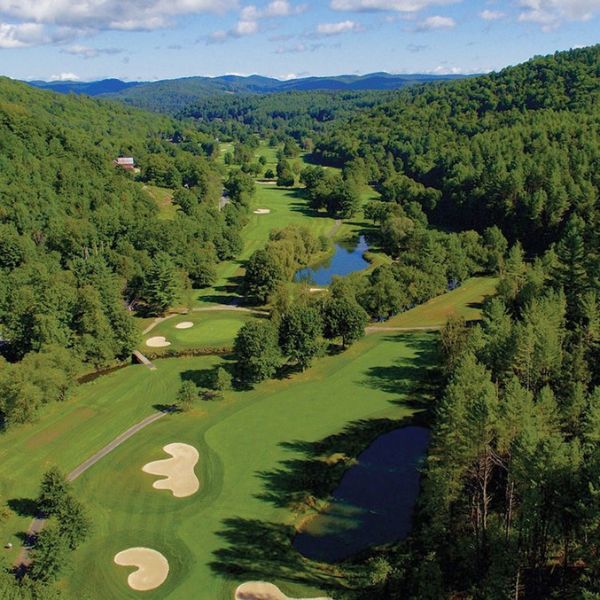 |
Golf at the Woodstock Inn & Resort, established in 1793 in Woodstock, Vermont, dates to 1895, when a distinguished guest lamented to the general manager about the lack of a golf course, as he had brought his clubs all the way from Boston. The inn obliged, and the first course was built that year. The resort’s current golf course dates to 1906, and it is the oldest public golf course in the state. The 5th green is the only portion on the course that remains from the 1906 design. In the early 1960s, the course was redesigned by notable golf course architect Robert Trent Jones Sr., under the direction of the inn’s new owner, Laurance S. Rockefeller. Rockefeller was a great fan of golf, and he and his wife, Woodstock native Mary French, enjoyed playing the course together when they were in Vermont. Jones, a creative and prolific golf designer, oversaw the construction of other mid-century courses at Rockefeller’s remarkable Mauna Kea Beach Hotel (1964) and the burgeoning Colonial Williamsburg Resort around the same time. Today, surrounded by the lush Kedron Valley and featuring stunning views of Mount Peg, the Woodstock, Vermont golf course is a picturesque venue. The 18-hole course boasts a par-70 layout that offers an unforgettable experience for golfers of all abilities. Woodstock Inn & Resort was inducted into Historic Hotels of America in 2016. |
Bedford, Pennsylvania
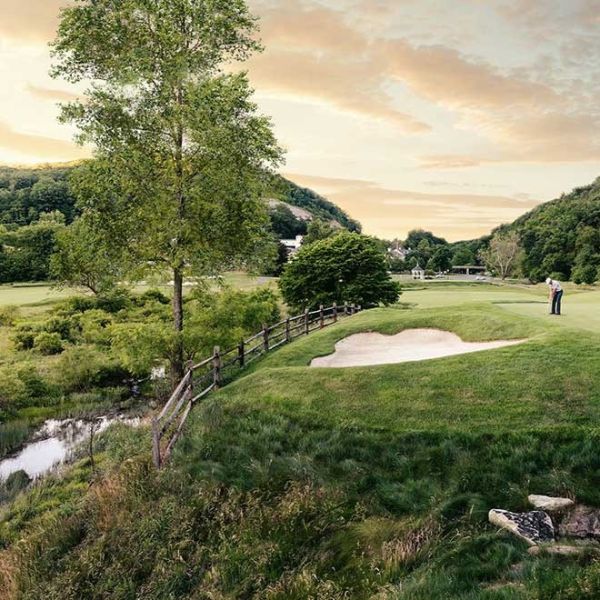 |
Omni Bedford Springs Resort was established in 1806 and, naturally, was an early adopter of golf in the United States. The resort is home to one of the nation’s first golf courses, with 18 holes—considered very large for a golf course at that time—first designed by Spencer Oldham in 1895. Aptly named, the Bedford Springs Old Course was redesigned by A.W. Tillinghast in 1912 and reimagined by the renowned golf course architect Donald Ross in 1923. Giants of the Golden Age of golf course architecture, both Tillinghast and Ross are honored by the World Golf Hall of Fame. Ross had trained at St. Andrews in the 1890s and then spent most of his career and life in the United States, where he designed many of the country’s championship courses. Overlooking breathtaking views of the Allegheny Mountains and Cumberland Valley, this remarkable course features the work of three masters of golf architecture. Renovated in 2007 by architect Ron Forse, early-20th century documentation of the Bedford Springs Old Course was used to restore lost holes and other historical features contributed by Oldham, Tillinghast, and Ross. Preserved and updated, this remarkable palimpsest course can be enjoyed today by 21st-century players eager to experience the game as it was designed by leading architects of the game’s Golden Age. Omni Bedford Springs Resort was inducted into Historic Hotels of America in 2014. |
West Baden Springs, Indiana
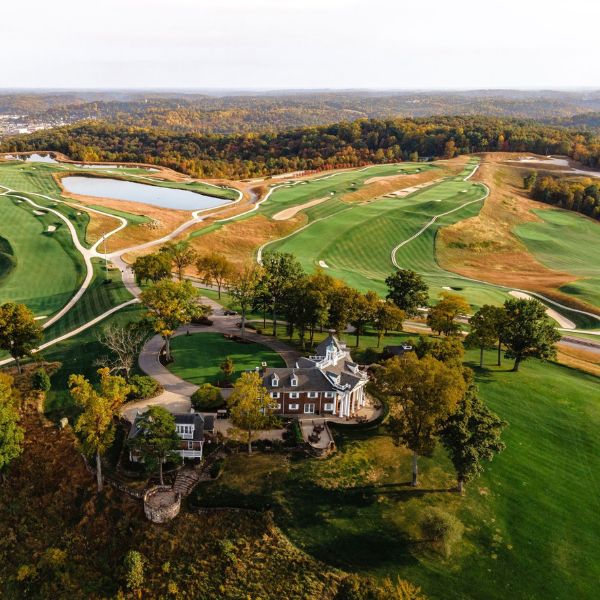 |
Golf and history enthusiasts are in for a treat at French Lick Resort in French Lick, Indiana, which boasts three courses designed by three greats of 20th-century golf course design. Notably, the resort’s most historic golf course—on account of its age, closeness to the original form, and the distinction of its designer—is the Donald Ross Course. Designed in 1917 by Donald Ross, who is considered to be one of the greatest and most influential golf course architects of the game’s Golden Age, this namesake course was an immediate success. The resort first hosted the PGA Championship in 1924, won by Walter Hagen. Hagen played a major role in popularizing the game as a professional sport and was the first golfer to become a millionaire playing the game. In the years since, the course has also gone on to host LPGA championships and Senior PGA events. Along with the greats of the game, world-class golf has attracted scores of celebrities to French Lick over the years, including singer Bing Crosby, comedian Bob Hope, business magnate Howard Hughes, former Secretary of State Condoleezza Rice, and professional football player Peyton Manning. Before he became basketball’s “Larry Legend,” French Lick native Larry Bird worked and played on the French Lick golf course in his youth. The French Lick Resort encompasses two historic hotels, French Lick Springs Hotel (1845) and West Baden Springs Hotel (1902), where guests have access to the Donald Ross Course, as well as courses designed by Pete Dye (2009) and Tom Bendelow (1907). French Lick Springs Hotel was inducted into Historic Hotels of America in 2000, and West Baden Springs Hotel was designated a National Historic Landmark by the U.S. Secretary of the Interior in 1987. |
Point Clear, Alabama
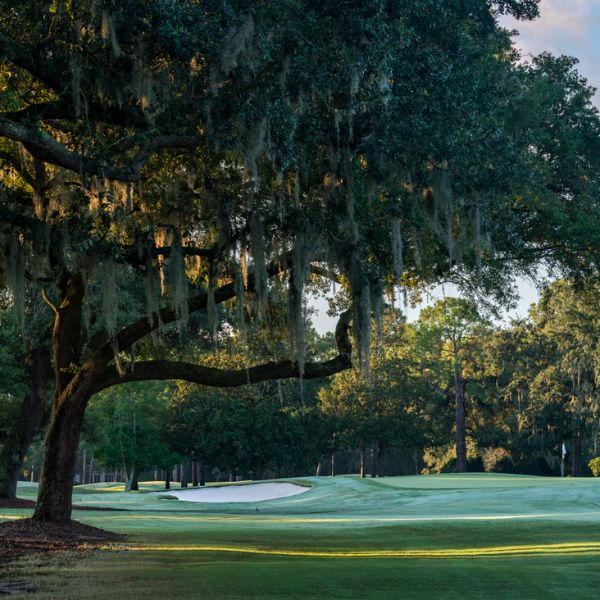 |
Golf course architect Perry Maxwell designed an 18-hole championship golf course for the Grand Hotel Golf Resort & Spa in Point Clear, Alabama, in 1947—just in time for the Grand Hotel’s centennial, as it was established in 1847. After World War II, a long-awaited retreat to the Mobile Bay resort offered weary Americans a chance to play Maxwell’s brand-new 7,104 yards of oak-lined links. Unsurprisingly, it was a grand success. Another nine holes were added, first in 1967 and again in 1983. Today, there are two 18-hole golf courses at the resort’s Lakewood Club: the Dogwood Course and the Azalea Course. Since 1947, the Lakewood Club has hosted former President Gerald Ford, European royalty, movie stars, and sports legends, along with legions of local and visiting golfers. The Ken Stabler Charity Golf Classic was held at the Lakewood Club for several years and hosted professional football players and other celebrities. It also played host to the U.S. Senior Women’s Amateur championship in 2021, 1986, and 1974, one of 14 championship tournaments run by the United States Golf Association. Despite its impressive age, the Dogwood Course is well-kept and cared for. It was renovated in 2005 by the Robert Trent Jones Golf Trail Team and again in 2018, all to give it a fresh and modern feel while retaining Maxwell’s vision for the course. Grand Hotel Golf Resort & Spa was inducted into Historic Hotels of America in 2011. |
New Paltz, New York
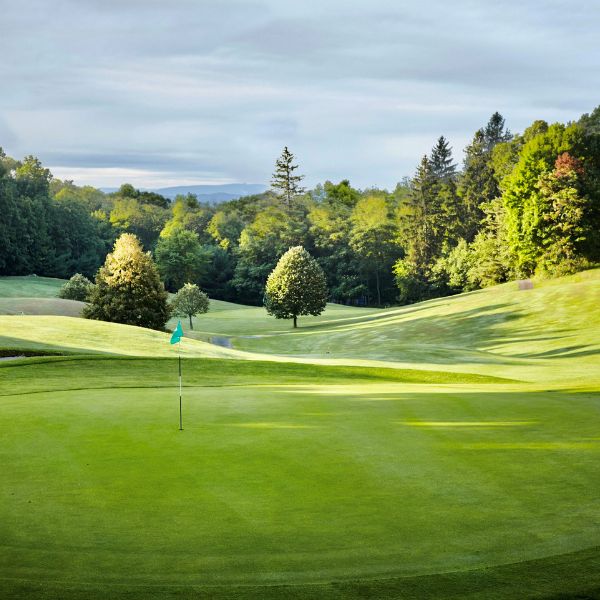 |
On top of the beautiful Shawangunk Ridge, named one of the "Last Great Places on Earth” by The Nature Conservancy, is Mohonk Mountain House in New Paltz, New York, where nature-seekers can find golf, gardens, and peace. The resort was established in 1869, and a historic nine-hole golf course (the Rest Course) was laid out by the resort’s founder, Albert Smiley, in 1897 on an apple orchard at the Mountain Rest Dairy Farm. Scotsman Robert D. Pryde added Scottish golf course genius to the greens when he lengthened the course to 2,350 yards in 1911. In 1925, the course doubled in size to 18 holes, when a second nine-hole course (the Hillside Course) was added. Although the Hillside Course was eventually converted into a ski slope in 1963, golf is still featured at the historic resort. Today, the Mohonk Golf Course features undulating fairways and protects itself with blind tee shots and uneven lies. Its 19th-century design provides a challenge for 21st-century golf equipment, making it a shot maker's paradise and one of the best nine-hole golf courses in New York. Mohonk Mountain House was designated a National Historic Landmark by the U.S. Secretary of the Interior in December 1986 and was inducted into Historic Hotels of America in 1991. |
Jekyll Island, Georgia
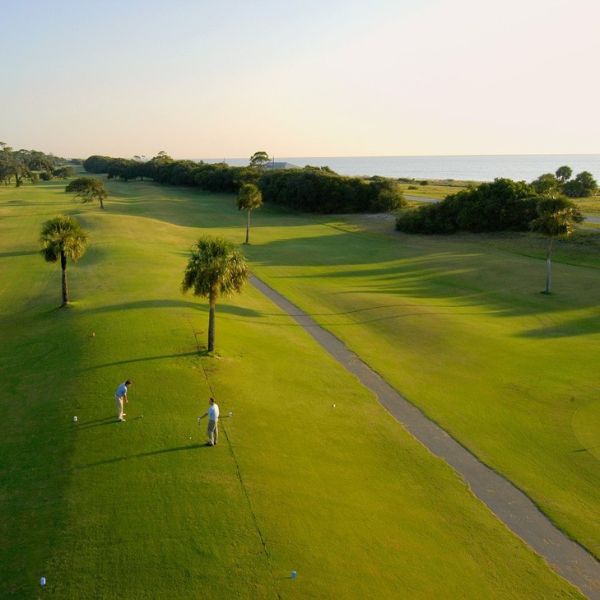 |
Jekyll Island Club Resort on Jekyll Island, Georgia, began as an exclusive Gilded Age private retreat for America’s wealthiest families in 1887. Today, the barrier island resort community is open to all, and welcomes golfers to play on its four grassy, windswept courses as they have for over 120 years. The first golf course at Jekyll Island Club was constructed in 1898. The most historic golf course still in play on the island is the nine-hole, par-36 Great Dunes Course designed by Walter “Old Man” Travis in 1926. Travis was a championship amateur golfer, an Australian immigrant to the United States who worked as a writer between winning British, U.S., and Cuban tournaments. Summoned to the island by some of the nation’s most elite families during the Club Era, Travis created the best course that money could buy. In golf history, along with hosting notable figures and golf championships, Jekyll Island is significant because the United States Golf Association chose it as the site for equipment testing. In 1924, the USGA tested new steel clubs against the traditional hickory clubs, as well as golf ball sizes and densities. These tests on Jekyll Island’s courses changed the game of golf. Jekyll Island Club Resort was inducted into Historic Hotels of America in 1994 and was designated a National Historic Landmark by the U.S. Secretary of the Interior. |
Mackinac Island, Michigan
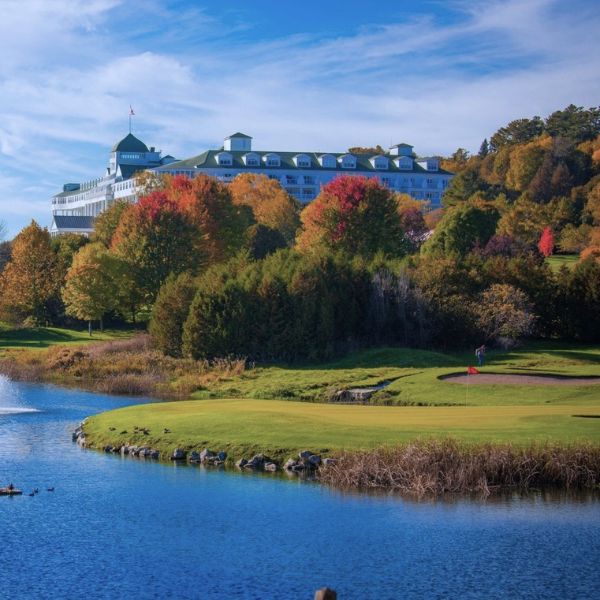 |
Grand Hotel on Mackinac Island, Michigan, provides guests of “America’s Summer Place” with a stunning 18-hole golf course. The Jewel, comprised of the Grand Nine and the Woods Nine, is the only course in the country with horse-drawn carriage rides between nines. The Grand Nine, located across from the hotel with views of the Straits of Mackinac, was designed in 1901 by golf links artist Tom Bendelow and then redesigned during Grand Hotel’s centennial in 1987 by golf course architect Jerry Matthews. In 1994, Matthews enlarged the golf course with the Woods Nine, located in the interior of Mackinac Island, with views of the Mackinac Bridge and the Upper Peninsula. Among the many sports champions and notable figures who have played The Jewel include 1987 U.S. Open Championship winner Scott Simpson, sports announcer Jim Nantz, and former U.S. President Gerald Ford. Ford was fond of Mackinac Island throughout his life, with his first visit taking place all the way back during his youth in the 1920s. (He served as an Eagle Scout at the State Park Commission’s Mackinac Island Scout Service Camp.) As such, Ford returned frequently while on vacation, engaging in activities like sampling fresh candy at Mary’s Fudge, touring Fort Mackinac, and playing a round or two at The Jewel. Grand Hotel was designated a National Historic Landmark by the U.S. Secretary of the Interior in 1989 and was inducted into Historic Hotels of America in 2001. |
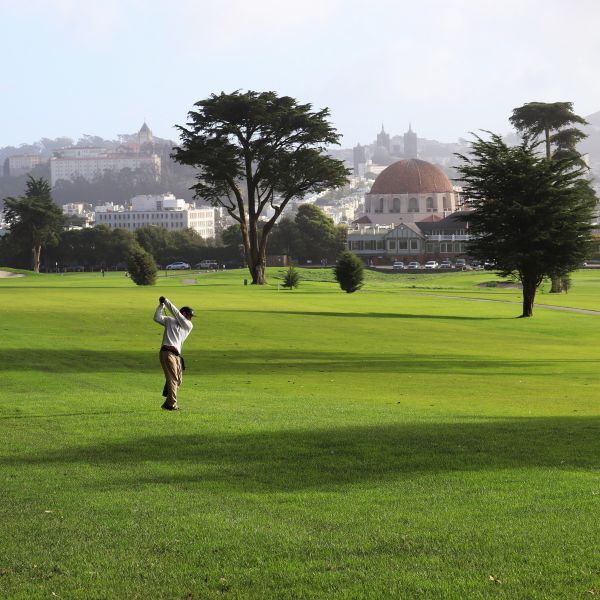 |
Located within the Presidio of San Francisco, California, the Presidio Golf Course dates to 1895, when John Lawson designed nine holes for military officers to play. Lawson noted, “God shaped this land to be a golf course. I simply followed nature.” The course is known for its spectacular forest setting, as well as its challenging play. Golf course architect Robert Wood Johnstone expanded the Presidio Golf Course to 18 holes in 1910. The Presidio Golf Course has hosted some of the world’s greatest athletes, celebrities, and famous artists of the 20th century: baseball Hall of Famers Babe Ruth and Joe DiMaggio, comedian Bob Hope, crooner Bing Crosby, and cartoonist Charles Schulz all played the Scottish game at the Presidio. The course is also notable for its environmentally sensitive management practices and has been recognized as a leader in environmentally sensitive golf course management. The Presidio is managed by a private-public partnership between the National Park Service, Golden Gate National Parks Conservancy, and the Presidio Trust. Heritage travelers interested in playing the public golf course can stay at The Lodge at the Presidio (1894) or the Inn at the Presidio (1903). Inn at the Presidio was inducted into Historic Hotels of America in 2011, and The Lodge at the Presidio was inducted into Historic Hotels of America in 2018. |
Pinehurst, North Carolina
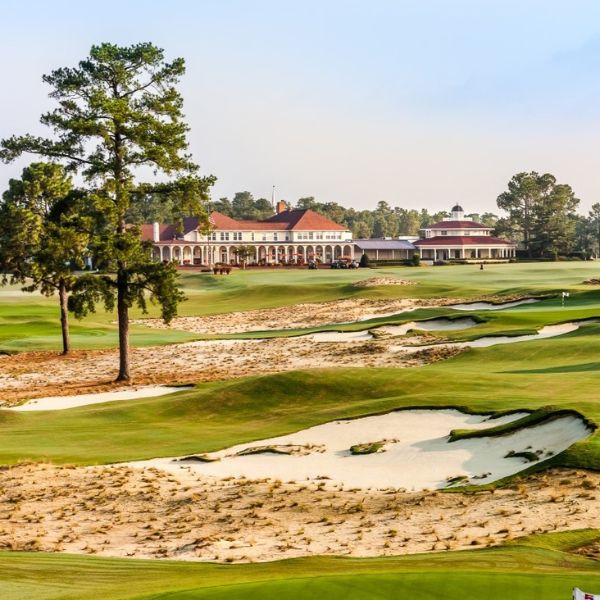 |
From humble beginnings as a pasture, to becoming one of the premier golf courses in the country, Pinehurst Resort is steeped in the sport’s history and tradition. Historians and golfers today celebrate Pinehurst Resort for its role in popularizing golf and providing blueprints for what a golf course should look like during the Gilded Age. Pinehurst Resort’s founder, James Walker Tufts, hired renowned golf course architect Donald Ross to oversee the day-to-day operations of its golf services. Ross went on to design four of Pinehurst Resort’s nine championship golf courses in play today, including its most famous course, Pinehurst No. 2, which was constructed in 1907. Pinehurst No. 2 has served as the site for more championship tournaments than any other golf course in the United States. Among the many well-known competitions held at Pinehurst No. 2 are the PGA Championship, the Ryder Cup, and the U.S. Open, as well as the North and South Open Championship. It most recently hosted the 2024 U.S. Open. The historic greens of Pinehurst No. 2 also saw the legendary duel between Payne Stewart and Phil Mickelson during the closing round of the 1999 U.S. Open. The two were neck-and-neck heading into the last two holes of the tournament. Stewart stuck his approach to four feet on 17 for birdie, then holed a dramatic 15-foot putt on the 72nd hole to win the championship, beating Mickelson by one shot. Pinehurst Resort was inducted into Historic Hotels of America in 1991. |
Bretton Woods, New Hampshire
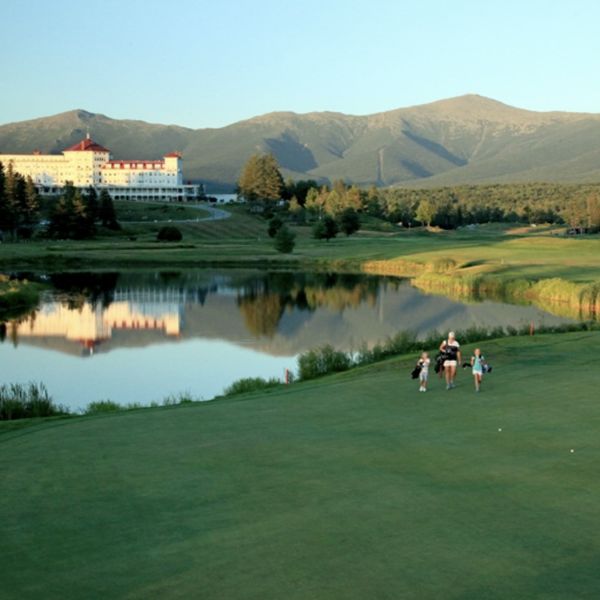 |
Omni Mount Washington resort is located at the base of stunning Mount Washington: at 6,288 feet, the highest peak in the Northeast. The resort is surrounded by nearly 800,000 acres of the White Mountain National Forest and is home to Bretton Woods, New Hampshire’s largest ski destination. Omni Mount Washington offers two golf courses: the award-winning 18-hole Mount Washington Course and the challenging 9-hole Mount Pleasant Course. Meticulously restored to Donald Ross’s original 1915 design, the 18-hole Mount Washington Course reopened in August 2008 and has been named New Hampshire’s “Best Course You Can Play” since 2009 by Golfweek magazine. It has played host to prominent golf enthusiasts and professionals, including U.S. pro golfer Gilbert Nicholls, golf course designer Alex Findlay, British golf champions Harry Vardon and J.H. Taylor, and U.S. Open winner Willie Anderson. The 9-hole Mount Pleasant Course, which opened in 1895, is a par-35 course running 3,215 yards alongside the Ammonoosuc River with gorgeous mountain views. The course was restored and upgraded by Cornish & Silva golf course architects in 1989. The full-service clubhouse features lessons, clinics, and merchandise, and The Grille is open seasonally and offers indoor and outdoor dining for lunch and libations. Omni Mount Washington was inducted as a Charter Member of Historic Hotels of America in 1989. |
Cooperstown, New York
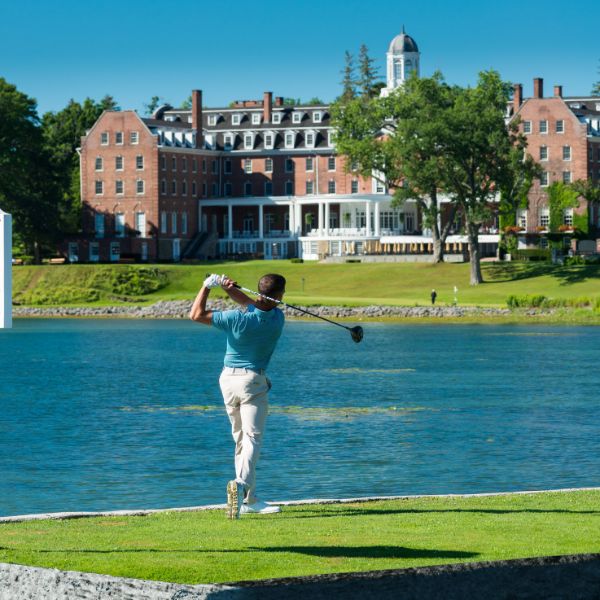 |
Located in historic Cooperstown, New York, the Leatherstocking Golf Course opened alongside The Otesaga Hotel in 1909 on the shores of scenic Otsego Lake. Featuring naturally contoured terrain, sweeping views, and diverse elevations, this championship par-72 course will inspire a player’s best game. Among many standout features are two great finishing holes: #17 par-3, playing up to 195 yards over water; and #18 par-5, with an island tee and the fairway along the lake. What began as a nine-hole course was transformed in 1919 by legendary golf architect Devereux Emmet, who expanded the course to 18 holes across 90 acres. This classic, Northeast-style course has changed little since then, though the late 1990s brought some upgrades, including expanded tee boxes, a state-of-the-art drainage system, restructured cart paths, and reshaped bunkers. With its location in Cooperstown, home of the National Baseball Hall of Fame and Museum, the course has played host to some of the legends of the game. In 1936, the inaugural class of inductees was enshrined, including Ty Cobb and Babe Ruth, whose golf game that weekend started a long tradition of Hall of Famers playing Leatherstocking during Induction Weekend. Leatherstocking has also hosted the New York State Four-Ball Championship, as well as the New York State Junior Championship. The award-winning course offers an unforgettable experience for both guests of The Otesaga and locals. The Otesaga Hotel was inducted into Historic Hotels of America in 1994. |
Asheville, North Carolina
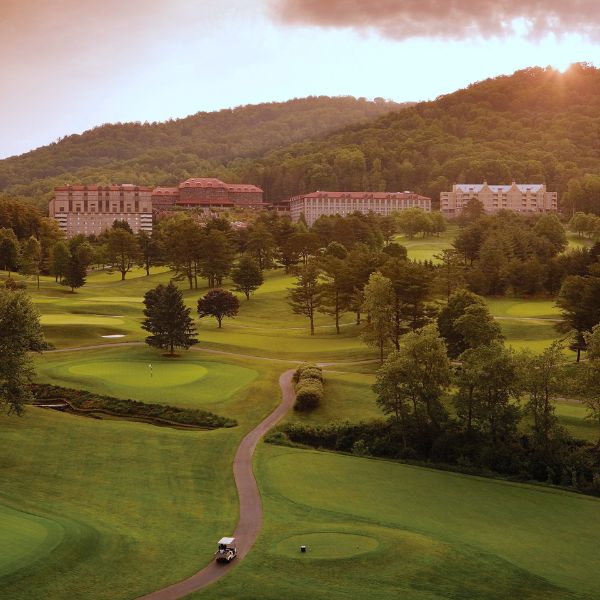 |
The historic Grove Park Golf Course at Omni Grove Park Inn in Asheville, North Carolina, has been described as the only rival to Pinehurst No. 2 in a ranking of the state’s Donald Ross-designed courses. The 18-hole, par-70, 6,400-yard course clears a bright green path through the rolling hills of the Blue Ridge Mountains, and elevated points give players spectacular views of the mountains and the magnificent Arts and Crafts-style historic hotel. The course opened in 1899 and was beautifully redesigned in 1926 by golf course architect Donald Ross, while the Grove Park Inn opened in 1913. Ross was a Scottish-born immigrant who trained as a young man with the great “Old” Tom Morris at St. Andrews during the 1890s. He then spent much of his career and life in the United States, where he designed many of the world’s championship courses during the Golden Age of golf course architecture. His iteration of the Grove Park Golf Course was a stop on the PGA Tour between 1933 and 1951. It was played by PGA stars Bobby Jones, Ben Hogan, and Jack Nicklaus, and more recently by former President Barack Obama—one of ten U.S. presidents to stay at the resort. The Grove Park Golf Course was updated in 2001 and retains master designer Donald Ross’s vision. Omni Grove Park Inn was inducted into Historic Hotels of America in 2000. |
Colorado Springs, Colorado
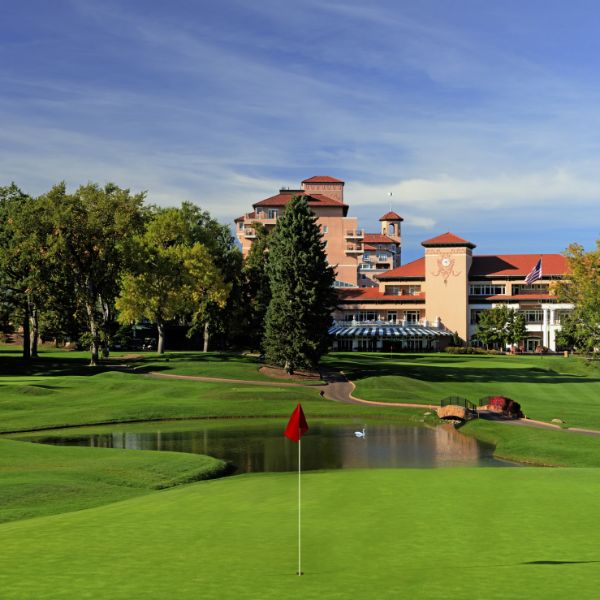 |
Known as the “Grand Dame of the Rockies,” The Broadmoor offers two historic and magnificent golf courses nestled in the Rocky Mountains: the East Course and the West Course, designed by Donald Ross and Robert Trent Jones Sr. Located in Colorado Springs, Colorado, golfers enjoy challenging terrain and amazing mountain vistas while surrounded by red rocks and white peaks in Pikes Peak. The Broadmoor opened in 1918, and golf was part of its glamour from the very beginning. The resort’s original 18-hole course was designed by legendary golf course architect Donald Ross in 1916 at the behest of Spencer Penrose, who envisioned turning his new mountain getaway into a world-class resort. Ross, who had designed golf courses for several of the top clubs in the country (including Pinehurst No. 2, which opened in 1907), declared The Broadmoor's golf course in Colorado Springs his best work. When The Broadmoor Golf Course opened for a Red Cross fundraiser on July 4, 1918, it was the highest golf course in the United States, at 6,400 ft in elevation. The course was split into two, the East Course and the West Course, by renowned landscape architect Robert Trent Jones Sr. between 1952 and 1964. Today, both courses feature holes designed by both Jones and Ross. The Broadmoor has hosted many major golf tournaments, including the 1959 U.S. Amateur (Jack Nicklaus's first major win), the 1967 U.S. Amateur, and the 1995 U.S. Women's Open (Annika Sorenstam's first major title). Today, guests are invited to play the courses and to visit the Broadmoor Golf Club’s Heritage Hallway, an exhibition of golf history in the Rockies. The Broadmoor was inducted as a Charter Member of Historic Hotels of America in 1989. |
Kohler, Wisconsin
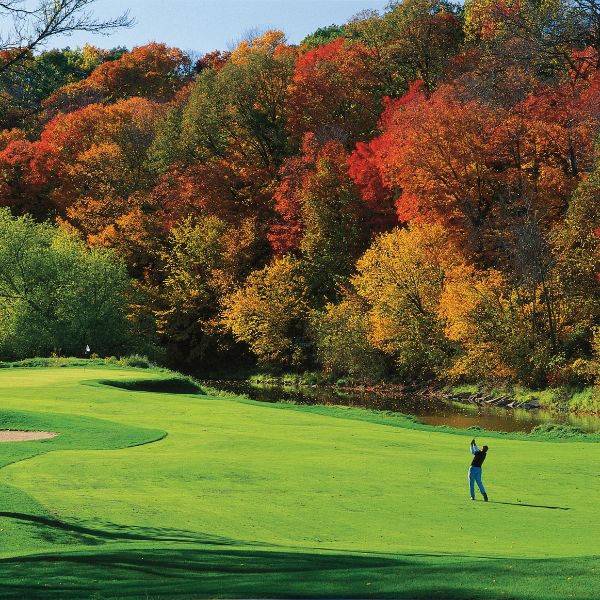 |
Guests at The American Club, which was established in 1918 in Kohler, Wisconsin, are invited to experience championship golf on any of the four Kohler courses, which have been rated among the world’s greatest. All designed by the legendary golf course architect Pete Dye in the 1980s and 1990s, these courses have hosted many championships, including two PGA championships, two U.S. Women's Opens, and the 2020 Ryder Cup. Two courses were constructed at Blackwolf Run® (the River Course and Meadow Valleys Course) and two at Whistling Straits® (the Straits Course and the Irish Course). At Blackwolf Run, the original 18 holes featured two nine-hole layouts, River and Valleys, that opened in 1988. They were both later expanded by an additional nine each. Each hole on both courses at Blackwolf Run is bestowed with a name that reflects the natural features of the glacier-carved land. The Sheboygan River separates the River Course and Meadow Valleys Course and cuts a seven-mile path that divides the resort. Whistling Straits opened in 1998. This wild, windswept coastal links-style course was sculpted along the grass-topped dunes of the Wisconsin coastline. In late September 2021, the 43rd Ryder Cup was held at Whistling Straits. It was the first public course in a quarter-century to host the Ryder Cup. The Blackwolf Run layouts are fun and remarkable for their unique characteristics, which include Pete Dye’s signature design features, especially on the River Course, and two railroad car bridges found on the Meadow Valleys Course. The American Club was inducted into Historic Hotels of America in 1991. |
St. Petersburg, Florida
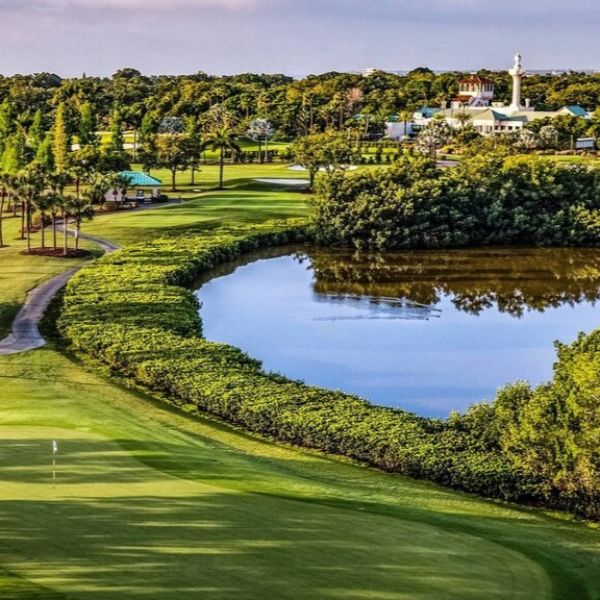 |
The Vinoy Resort & Golf Club, Autograph Collection emerged in the early 1920s following a golf bet made during a house party. A wealthy businessman named Aymer Vinoy Laughner hosted parties to entertain his friends and community, including professional golfer Walter Hagen. During a party at Laughner’s St. Petersburg home, the business magnate engaged in a good-natured dispute with Hagen over the power of his drive. According to one story, Laughner attested that Hagen’s swing—while powerful—had no chance of damaging the crystal within his pocket watch. The haggling reached its crescendo when Hagen wagered a bet of $170,000 that he could, indeed, smash its glass casing. Placing the watch firmly on the ground, Hagen proceeded to forcefully launch golf balls several dozen yards away on a distant neighbor’s lawn. But much to the golfer’s surprise, the watch had somehow survived the contest unscathed. Honorably, Hagen surrendered the money to Laughner. (Hagen could afford it: considered one of the greatest golfers of the 20th century and a leader in the growth of professional golf in the 1910s and 1920s, he was the first player to make a million dollars at the game.) Party guests mused that Laughner ought to use that money to build a spectacular holiday destination in downtown St. Petersburg—and that is what he did. The hotel’s golf club opened in 1927, and guests played the game on the 18-hole Snell Isle golf course, designed by landscape architect John R. Van Kleek. In 1992, the championship Vinoy Golf Course was redesigned by Ron Garl. Garl designed courses with the philosophy that a golf course should “sit softly on the land," and the Vinoy Golf Course at Snell Isle is a beautiful testament to that concept. Nestled along the downtown St. Petersburg waterfront, The Vinoy Resort and Golf Club was inducted into Historic Hotels of America in 1991. |
Death Valley, California
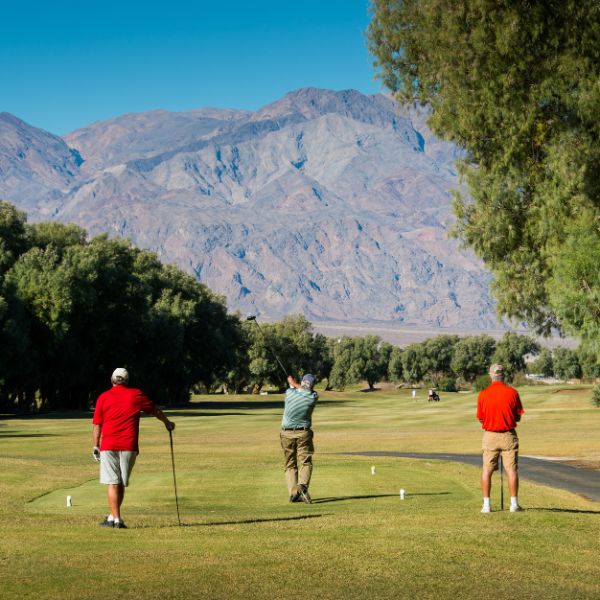 |
Guests can experience a round of golf at the lowest elevation golf course in the world during a stay at The Inn at Death Valley. Located 214 feet below sea level within the vast desert of Death Valley National Park, the resort’s Furnace Creek Golf Course features palm and tamarisk trees framing the fairways. The high peaks of the Sierra Nevada range are visible from all areas of this 18-hole, par-70 course. The Pacific Coast Borax Company built the Furnace Creek Inn in 1927, hoping to attract business to its Death Valley Railroad. The railroad was in dire need of additional revenue and began running passenger trains for tourists who wanted to experience the natural beauty of Death Valley at the comfortable new inn. Golf at Death Valley dates to the same year, when a date palm caretaker set up a three-hole golf course for local borax miners. In 1931, a nine-hole course was developed around the ranch land and date palm orchards. It was the first grass golf course in the California desert. In 1968, noted designer William F. Bell expanded the course to 18 holes. Golf course designer Perry Dye reworked the course in 1997, and a state-of-the-art irrigation system was installed to allow it to remain open all year. Athletes familiar with the course include basketball champion Bill Walton and Australian golf champion Steve Elkington—who played the course for his TV show, Secret Golf. Future golf champion Phil Mickelson received his first set of clubs at the Furnace Creek Pro Shop, purchased for him by his father. To young Mickelson’s delight, the shop sold clubs for left-handed players. He went on to win six major PGA Tour championships, including three Masters titles, two PGA Championships, and one Open Championship. The Inn at Death Valley was inducted into Historic Hotels of America in 1999. |
Litchfield Park, Arizona
 |
Travelers to The Wigwam in Litchfield Park, Arizona, are invited to step onto its historic emerald fairways and experience a golf resort built for golfers. This Litchfield Park tradition began in 1930 when Scottish gardener Jacques Phillip designed and dug the resort’s original nine holes. The resort had opened a year earlier and was first operated by the Goodyear Tire & Rubber Company, which had created the resort complex as a vacation destination for its high-ranking executives. Phillip knew that Goodyear executives enjoyed the game, so he used his tractor to build them a golf course. The tee boxes, fairways, and greens were all made of sand, with thick oil on the greens to keep the sand from blowing away. The original course design was lost in the 20th century when three new courses emerged in the 1960s and 1972: the Blue and Gold courses (named for the colors of the Goodyear Tire & Rubber Company logo) designed by Robert Trent Jones Sr., and the Red Course designed by Robert “Red” Lawrence. The Wigwam’s notable Gold Course opened for play in 1965. The first foursome to play the original design in the early 1940s included professional golfers Jimmy Thomson, Horton Smith, Lawson Little, and Vernon Oren Allen. Little won the U.S. Open in 1940, and Smith won the first Masters tournament in 1934 (and again in 1936). Other notable players at The Wigwam include actor Clint Eastwood, and professional golf stars Brooks Koepka, Justin Thomas, and Bryson DeChambeau. The Wigwam was inducted into Historic Hotels of America in 2010. |
Hershey, Pennsylvania
 |
Tee off at the sweetest golf course on Earth! Golf started in Hershey, Pennsylvania, in 1909, when founder Milton S. Hershey had a nine-hole course built between his chocolate factory and his home. In 1930, he commissioned Maurice McCarthy to design the West Course. McCarthy also designed the Juvenile Golf Club (now Spring Creek Golf Course), which opened in 1932 as the first course in the country built specifically for children under the age of 18. The Juvenile Country Club used Milton S. Hershey’s home, High Point Mansion, as its clubhouse for decades. Guests at The Hotel Hershey® in Hershey, Pennsylvania, enjoy access to the Hershey Country Club’s West Course. In 1934, Henry Picard was hired as the Head Golf Professional. Nicknamed the "Hershey Hurricane" and “Chocolate Soldier,” his on-course skills led to 26 wins on the PGA Tour, including the 1936-1937 Hershey Open, 1938 Masters Tournament, and the 1939 PGA Championship. After Picard, legendary professional golfer Ben Hogan—considered one of the greatest players of all time—served as Head Golf Professional at Hershey. Of his 63 tournament wins, 52 occurred during his tenure as Hershey’s golf professional, including six majors. Since its founding, numerous national tournaments have been held at the Hershey Country Club, and individuals, including players Arnold Palmer and Jan Stephenson and former Pennsylvania Governor Tom Ridge, have walked its greens. The Hotel Hershey® was inducted into Historic Hotels of America in 1991. |
St. Simons Islands, Georgia
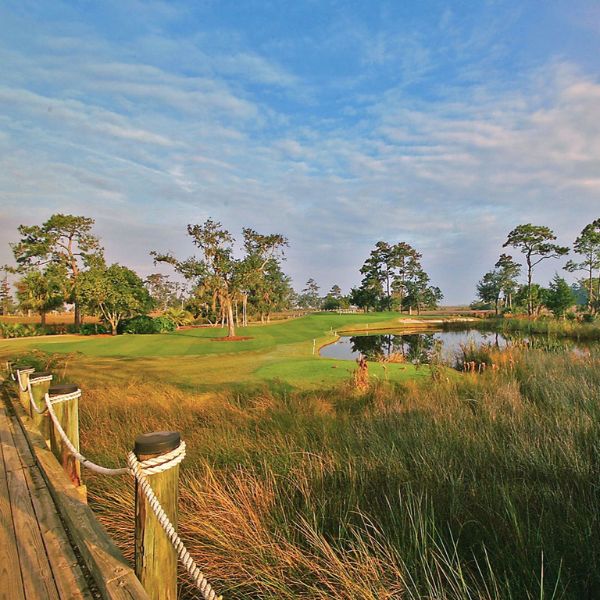 |
The King and Prince Beach and Golf Resort on St. Simons Island, Georgia, one of the Golden Isles of the larger chain of Sea Islands, has welcomed travelers to play the award-winning King and Prince Golf Course since it opened in 1989. Nestled in forests and salt marshes, just south of the Hampton River, the course was designed by golf course architect Joe Lee, who planned 18 holes, par-72. Today, golfers travel along 800 feet of elevated, marsh-traversing cart bridges to experience play on four spectacular holes gently carved from the marsh islands. The golf course features MiniVerde®, ultra-dwarf Bermuda grass, and green collars that are 60 inches around each green and planted with Tifsport Bermuda grass. Water features include lagoons, marshlands, creeks, and ponds, creating both aesthetic appeal and natural hazards. The course's climate is warm and humid, with hot summers, mild winters, and substantial rainfall, particularly in the summer, maintaining green conditions. Playable year-round, the best conditions are usually in the spring and fall. The course is often found on golf's "must-play" lists for the Florida to Myrtle Beach circuit. In 2009, the resort embarked on an extensive restoration campaign led by landscaper Billy Fuller, that included the re-grassing of green complexes, renovating bunkers, and irrigation improvements. The King and Prince Beach and Golf Resort was inducted into Historic Hotels of America in 1996. |
Williamsburg, Virginia
 |
In addition to its immersive historical experiences in Virginia’s colonial capital, Colonial Williamsburg Resorts has offered world-class golf to guests since 1947. That year, a 9-hole course designed by Fred Findlay opened for guests at the Williamsburg Inn, which had opened ten years earlier in 1937. Soon, Colonial Williamsburg leadership decided to upgrade the golf offering by commissioning the world-renowned architect, Robert Trent Jones Sr. to design an 18-hole course. In 1963, the Golden Horseshoe Golf Club opened to rave reviews. The name comes from the gift given by Colonial Lieutenant Governor Alexander Spotswood to the men who went with him on an exploratory mission across the Appalachian Mountains and the Shenandoah Valley in 1716. Upon their return, Spotswood gave them each a jeweled, golden horseshoe. During the golf boom of the 1990s, Colonial Williamsburg built a second 18-hole course and selected Rees Jones, the son of the Gold Course architect, Robert Trent Jones, Sr., to design the Green Course. The Gold Course has undergone two restorations to keep the conditions pristine, the most recent being conducted by Rees Jones in 2017. Both the Gold and the Green Course are cut through mature hardwoods and pines on a rolling topography that is undisturbed by housing or development. Robert Trent Jones Sr. remarked that “the Gold Course is a natural arboretum upon which a great golf course has been built.” Williamsburg Inn was inducted into Historic Hotels of America in 1994. |
San Diego, California
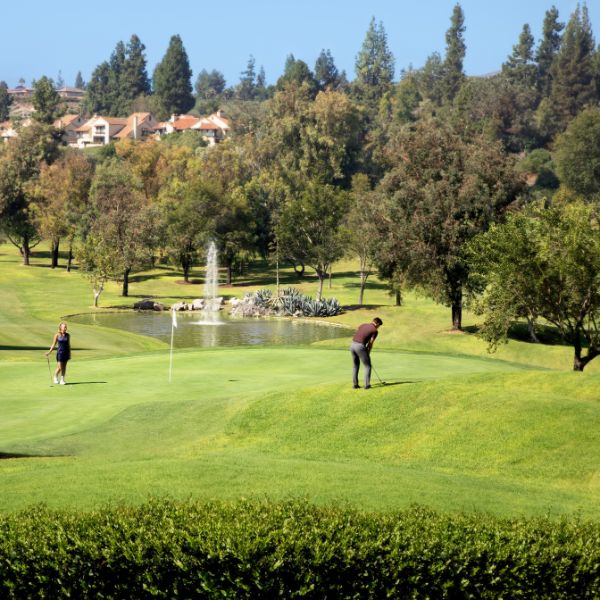 |
Rancho Bernardo Inn in San Diego, California, opened its doors to guests in 1964. Within a year, along with a place to stay, the retreat also offered travelers a chance to experience a championship golf course on 6,631 yards of rolling green hills. The course at Rancho Bernardo Inn was designed in 1963 by William F. Bell, son of golf course architect William Park Bell. Bell and his father are well known for their work designing award-winning championship golf courses across the West Coast and Southwest, especially in California, Arizona, and Nevada. The course at Rancho Bernardo Inn has hosted events sponsored by the Professional Golfers’ Association (PGA), starting with the San Diego Open in 1964. Art Wall Jr. won the resort’s inaugural tournament, beating both Tony Lema and Bob Rosburg by two strokes each. The LPGA then hosted the Honda Civic Classic at the Rancho Bernardo Inn from 1978 to 1980. Golfing legend JoAnne Carner won two of the three competitions, further solidifying her status as one of the foremost athletes within professional golf. Her three different career USGA wins place her on par with the likes of Jack Nicklaus, Arnold Palmer, and Tiger Woods. Rancho Bernardo Inn was inducted into Historic Hotels of America in 2021. |
Howey-in-the-Hills, Florida
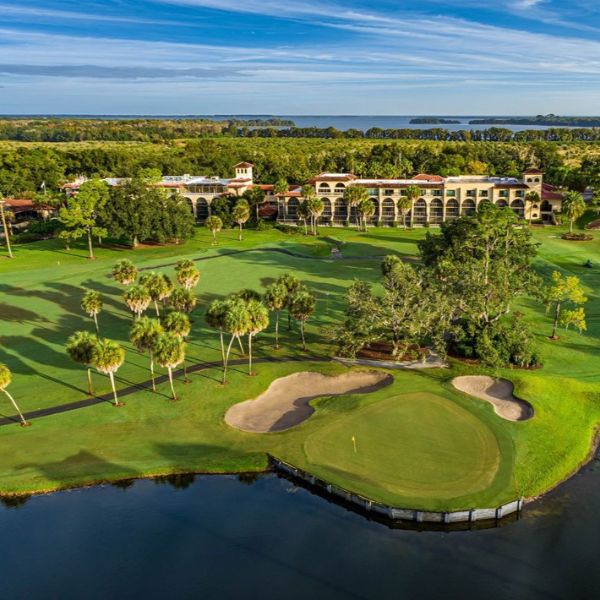 |
The historic Mission Resort + Club in Howey-in-the-Hills, Florida, is home to two historic and picturesque golf courses: Las Colinas and El Campeón. The latter, El Campeón (The Champion), is the most historic of the two. Built in 1917 by George O'Neil, El Campeón is one of the oldest courses in the Southern United States and has a classic design, although it features unusually sharp elevation changes in the typically flat Central Florida terrain. It has hosted everything from local high school and college competitions to professional tournaments. Las Colinas (The Hills) course, which was created in 1992 by former PGA Tour winner Gary Koch, lives up to its name, with wide fairways rolling over gentle rises. Both courses at Mission Resort + Club feature undulating greens surrounded by tropical vegetation and incorporate large water hazards on many holes. Among the many high-profile guests that have teed-off at Mission Resort + Club are Arnold Palmer, Tiger Woods, Jack and Gary Nicklaus, Bubba Watson, and Jim Thorpe. El Campeón course is a Founding Member of the Florida Historic Golf Trail. In 2009, El Campeόn golf course was awarded the Florida Golf Course of the Year by the National Golf Course Owners Association. It is also one of the first courses in the Southeast with grass greens. Mission Resort + Club was inducted into Historic Hotels of America in 2023. |
Kohala Coast, Hawaii
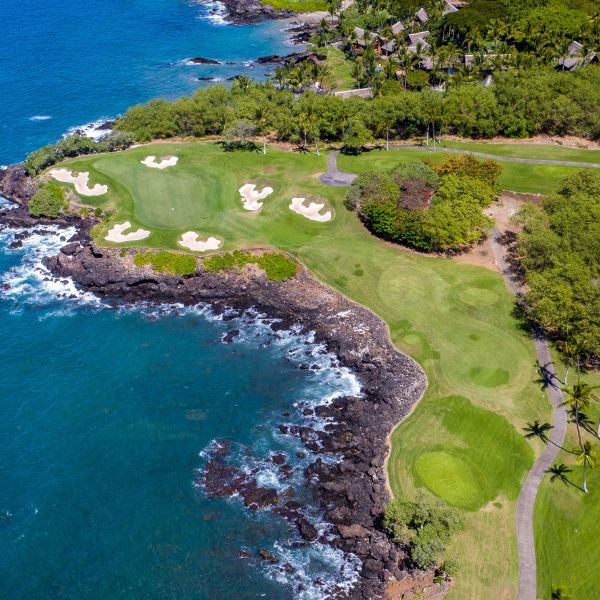 |
The Mauna Kea Golf Course was the first resort golf course on the island of Hawaii, and the first course built on an ancient lava flow. This award-winning championship golf course at the Mauna Kea Beach Hotel, on the Kohala Coast of Hawaii, has led the way in the beauty and design of golf courses in Hawaii since its debut in December 1964—just before the hotel officially opened in 1965. In a made-for-television event, the course was debuted by golf’s “Big Three:” Arnold Palmer, Jack Nicklaus, and Gary Player. Since that premiere, the course has welcomed celebrities, professionals, and amateur golfers who recognize it as a “bucket list,” must-play course. Specifically, guests and locals continue to come back to this course just to see the epic over-the-ocean third hole. Golf course architect Robert Trent Jones Sr. designed the course and developed a new technique that transformed the rocky surface into soil. The course features high-efficiency, ultra-dwarf TifEagle Bermuda grass on the greens and Tifway 419 hybrid Bermuda grass on the tees, fairways, and roughs. Rees Jones, son of Robert Trent Jones Sr. has continued to upgrade the course to ensure it offers challenging, memorable play for all player levels. The course’s 99 bunkers and undulating greens present a challenge for the most seasoned golfers, and a memorable day of play for leisurely golfers. Its signature over-the-ocean par-3 Hole 3 is among the most daunting, photographed, and awarded par-3 holes in the world. It is a stunning tee shot of 272 yards from the championship box to the green. Mauna Kea Beach Hotel was inducted into Historic Hotels of America in 2016. |
“Congratulations to the golf courses named to The 2024 Top 25 Historic Hotels of America Most Historic Golf Courses list. These courses are beautiful historic sites where visitors can play a game they love, teach someone the game, or view championship golf tournaments—history in the making. Families gather on them to make their own memories,” said Lawrence Horwitz, Executive Vice President, Historic Hotels of America and Historic Hotels Worldwide. “Historic Hotels of America offers golf destinations in desert oases, on tropical islands, between mountain peaks, along vineyards, and parallel sandy coastlines. Travelers will be eager to take home a golf tee, golf ball, scorecard, or other souvenir from the first time they played at any of these iconic golf courses.”
Read more:
The 2024 Top 25 Historic Hotels of America® Where Women Made History List Is Announced
The 2024 Top 25 Historic Hotels of America® Most Romantic Hotels List Is Announced
The 2024 Top 25 Historic Hotels of America® Where U.S. Presidents Made History List Is Announced
The 2023 Top 25 Historic Hotels of America Magnificent Gingerbread Displays List
The 2023 Top 25 Historic Hotels of America Culinary Heritage and Traditions List
The 2023 Top 25 Historic Hotels of America Most Haunted Hotels List

